2017 Husqvarna TX300
Two-Stroke White Dream
MSRP: $9199.00
- 300cc of near vibration fee, silky smooth power.
- Light like a 200cc bike but still heavy on power.
- Less weight than most motocross bikes.
- Some hate the push-button quarter-turn gas cap.
- At least it is easy to get to the jets and needle in the carb.
- Did you check you fork's air pressure along with your tires?
Introduction
- The new 250/300cc engine platform is here.
- Is there a two-stroke revival for off road or has it never fallen off?
Husqvarna is back and there is no doubt they are as strong as ever. The brand has cycled through many chapters (even a few 13s), and owners yet now the Swedish brand is now backed by the might of KTM. Huysky can now utilize ever ounce of Austrian muscle to build and develop the best off-road bikes they can. The brand can differentiate itself from KTM's in just enough ways to stand alone but not so much in ways that deviate from a solid and usually fault-free package. But what is the TX300 for and how good is it? Those are the questions we aim to answer in our full test of the bike.
We received the first TX300 in the US and proceeded to take it to track and trail to put the multi-purpose two-stroke platform through its paces for more than just a quick impression.
Changes
- All new engine.
- Frame and bodywork mirror changes across the Husky line.
- It isn't a KTM, it is just built in the same factory.
The 2017 Husqvarna TX300 is a new motorcycle and yes it does share a load of technology with its sister the KTM. But there are differences between the two bikes. For instance, the Husqvarna has its own plastics, fuel tank, carbon fiber/composite sub frame and Magura hydraulic clutch. Husqvarna will only offer this model and does not have a TX250 for 2017. Although if you wanted to downsize the 300, it is possible to put a 250 cylinder on the 300, but nobody in their right mind would!
The frame is what starts off as new but it’s based off the 2016 frame according to Husky. Now thinner, the hydro-formed and laser-cut has 20% higher torsional rigidity for improved stability while longitudinal stiffness is reduced by 30% for claimed improved suspension functionality. The carbon composite sub frame has been updated and works with the new Husky styling.
The air fork is what helps the TX go on its 2017 diet with a total claimed 4.1-pound saving over 2016. The change from the 4CS fork to the WP 48mm split air fork (the first modern off-road bike to go to air) with air on the left side and dampening on the right is part of the weight purge. The inner air chamber is what acts as the spring so if a fork seal were to fail, the fork would still hold itself up. The fork alone has a claimed savings of 3.6 pounds over the 4CS fork. The handlebar clamp and bar mount is new and rubber mounted. Out back a revised damping setting and off-road tuned linkage also set the bike apart from KTM counterparts.
To reduce the touchiness, the rear brake lever is now 10mm longer and the rear brake has updated pad material.
The engine is what could help this bike become a game changer. The new mill has keywords like “centralized oscillating mass” tossed around. What does that mean, smaller and more compact engine? The crank is 4mm higher than in the past and the clutch is 19.5mm higher. These are all heavy spinning parts and they do affect the way bike changes direction and handles. Other big news is the engine is now counter-balanced to further reduce any vibration that may come from the larger bore two-stroke. Yes it adds a little weight but it can also make for a very smooth power delivery, especially at higher RPM. Inside the tranny, unlike the TC motocross bike, the TX off-road model is equipped with a 6-speed close ratio transmission over the standard 5-speed unit. In addition to the new cases, the top end has also been revised with a new a cylinder, piston, and crankshaft in the lower end. Lastly the electric starter is now mounted on the bottom of the motor (instead of the side and reduced the need for intermediate gears and some wear issues in the cases that had become problematic for those who didn't maintain the lubrication.
And because two-strokes are no longer king of the hill, carburetor suppliers are getting more and more difficult to source. Husqvarna has switched to the Mikuni TMX38mm unit for 2017. We had to mess with the jetting a little to get it dialed in but you can read all about that below.
The TX is a closed course off-road race bike but still comes with a 2.6-gallon clear fuel tank, 18-inch rear wheel with Dunlop AT 81 meats, hand guards, electric start, of course, and a lithium Ion battery standard. And like all off-road bikes, a spring-loaded side stand. An hour meter mounted to the triple clamp is also standard. The Husky gets the tool-less pin-in Twin Air air filter and ODI clamp-on grips as well.
Power
- Smooth and quiet--deceivingly fast.
- Minimal vibration makes the bike feel lighter.
- Excellent clutch control.
Here is how we test power. Like most, we like to get to a place where we can twist the throttle to the stop and then hang on. The 300 is no sissy here and we did this alongside a KTM 500 just for kicks to see how fast this bike really is. Quickness and acceleration are its attributes but there is something very funny about how quick and fast this bike is; it feels slow in going very fast. You know how bikes that sound quieter and vibrate less feel slower? Well this Husky is pretty quiet (like most two-strokes with a well packed muffler, even more so with the FMF Powercore S/A we did a lot of our testing with) and the addition of the counterbalanced takes a lot of the typical and common vibration out of play. Side-by-side the 300 and 500 were dead even till it was time to shift on the 300, which was earlier than on the four-stroke as you should suspect.
But in roll-on or clutching it with a handful of throttle, the power is never sudden or surprising, it is just always there. There is a surprising amount of torque, especially at very low RPMs for an engine that feels like there is very little flywheel weight. The ability of the engine to "snap" or "bark" is always there but it will also "chug". In chugging it does not feel like it is using flywheel weight to keep the motor spinning but more like a spring that has been wound up. There really isn't ever a ding-ding-ding that bigger bore two-strokes are known for. We'll call is a blurr of power. And we're betting it has a lot to do with the counterbalancer not only adding inertial mass like a flywheel but like on the 17 KTM 250SX, the smoother feeling of the engine also puts it to the ground. The motor revs out as far as any 250cc two-stroke and depending on the powervalve setting can be pretty aggressive have it hit up top if that is desired.
Of course with a carb, jetting is a factor and with this Husqvarna there are some issues. Being on the safe side seems to be the best way to describe the stock jetting, even at near sea level elevation, it's rich. The jetting isn't horrible but those riders that can feel it knew the TX needed some help. Especially as we went up to altitude. Luckily the bike is sold with some additional jets and needles that should get you in the ballpark, even if we didn't get these jets with the test bike.
For 4000-6000 ft. elevation we were one leaner on the pilot jet and running a one leaner needle (6BFY43-74) in the second position or the stock needle in the first or leanest position. The air screw adjustment was very critical as well for off-idle throttle response to be crisp and we were usually at 1.5 to 2 turns out knowing that after two turns it is time for a leaner pilot jet. Getting to and swapping jetting and needle is very easy and you don't have to remove anything, just loosen and turn the carb. The main jet was less sensitive and did not change how the bike ran compared to the pilot and needle. We have to note with the Mikuni the 300 offers up good fuel economy off-road and on trail rides. Close to 30 MPG or over 65-miles per tank. But on the track or racing off-road the bike can really guzzle and we think it was more about how much spilled out the overflows while bouncing around.
Another aspect of tuning the power delivery is the easily adjustable powervalve. Usually the bikes are set for peak power when they are built and run in at the factory. Going in half-turn increments (in) a rider can get a longer lasting or slower pull through the power or (out) more rev and a harder hit of power when the powervalve opens. Switching the internal spring can have more dramatic effects.
The gear box is a six-speed unit in what Husky calls a semi-close ratio spread. So it is the motocross gear ratios with an extra gear and a different final drive to get the spread needed. It works but for some picky riders the spread was not enough on either end of the spectrum, mostly on going 70-plus MPH and having to scream the bike. The Magura activation of the clutch is quicker and sharper than the Brembo feel and some like this and others don't. Either way the clutch feel and durability are excellent and there is very little fade even in abusive conditions. But the power is so good you don't really need to use the clutch much anyways.
And back to how quiet the TX (and most Husqvarnas when compared to KTMs) is and what we feel. The composite subframe and air box seems to do a better job of holding in the noise a rider hears as well as being a little more restrictive with the amount of air it lets in. Even in wide-open hill climbs we did not feel like the bike was starving for air but when you get on the gas really hard, here we felt it a little bit in response. How much of that was noise versus the power that went to the rear wheel was debated by riders but it wasn't enough of an issue for anyone to want to go drilling holes in the air box cover.
In case you wondered, we never touched the kick-starter. The new electric starter position seems to work out just fine.
Suspension
- New for off-road--an air-spring fork.
- This setup is geared towards aggressive single track riding and racing.
- Set the air in the fork and forget about it for a few rides.
The TX300 was our first true off-road bike with an air-spring fork. So we were excited to see how this would play out for the bike and for the use of air off-road. Lets start by saying we're impressed and not worried one bit for the future. And this test will not become all about the air fork for a couple of reasons. First, some riders never knew, commented or complained one bit about the fork and were frankly surprised when informed the fork was air. Like the vast majority of riders, if it works, they are just fine. Secondly the durability and performance of the air fork designs have come a long way in just five years mostly with the air holding cartridge being competitively internal so all of that "will my forks collapse when I get a blown for seal" is pointless. And lastly WP has been on the very conservative side with the production AER 48 fork taking time to arrive at a place where a lot of the downsides of the air-spring design have been addressed. But no matter what you still have to put the right amount of air in it, just like your tires.
Now the unique feature of the WP fork is that it only has one air filled chamber on one side and uses valves and an internal regulator to provide the right pressures to the spring and balance sides of the fork. The recommended pressure for the TX300 was 9.6 Bar (or roughly 139 PSI) and it needs to be set with the fork fully extended with the bike on a stand. And like all air forks, the pressure is like the spring rate so once you find the right one, we advise you to quit messing with it and remember there are clickers to do the typical adjustments. And we have found that the compression and rebound adjusters on the WP forks act a little more on the mid-speed valving than the typical low-speed adjustments that are common and easier to feel on most forks. This system affect the ride height of the fork as well as the damping force in both directions so sometimes a stiffer setting can add a softer initial feel.
Out back is an all-new WP shock for the TX and mirrors the same shock found on all of the other Husky's and top-line KTMs. It rides through a linkage that is said to be specific to this model range of Husqvarna but we never can tell between KTM and Husky when trying to get specifics about these things. No worries, the good thing is that it works just fine.
We basically set our ride height to 103mm and forgot about it for off-road riding never feeling the need to deviate from stock. Here the bike was balanced and very planted to the ground--not dancy one bit like most XC-type bikes tend to be. Mostly the initial softness that the air fork allows while still having the ramp up in progression needed for more aggressive bumps and faster riding. The TX felt soft and plush enough to be comfortable on a trail ride but it was on the more aggressive side of that spectrum. It would be perfect for racing a single track enduro and pretty close for GP or GNCC style racing for most riders,
When we took the bike to the track it was definitely a little out of its element. Here the bike used too much stroke too soon and really blew through the stroke in the rolling bumps. We basically added 5-9 clicks of compression on each end and slowed the rebound down about 4-6 clicks on both ends to combat this springiness to make it acceptable. With the adjusters almost closed, still compared to a MX bike it was always soft and moving around too much. We added a few PSI to the fork which helped but the rear of the bike would need a stiffer spring to keep it balanced. In comparison to the setting of a KTM XC the Husky is a much more off-road platform and the KTM seems to handle the track better.
Chassis - Handling
- Very agile for a big-bore.
- There is still vibration but you have to hunt for it.
- The TX is very planted for a two-stroke and sticks to the ground better.
If there is one standout area for this bike it's the light-weight feel of the handling for a 300cc machine. Compared to the last generation the differences are big and if you go back just a few more yeas in the Husky line the difference are astronomical. At just 235-pounds full of fuel (223 no gas) the scale is telling a lot of the story. But the weight placement (or lack of weight to be more specific) is where the feeling is coming from. Because of the air fork the front of the bike is feathery and light, especially in the turning feel of the handlebar. The lack of vibration plays into this too. The vibes are not totally eliminated but for sure the are massively reduced and most riders felt this contributed to feeling lighter and more agile. Then then there is the chassis being more narrow and a little flatter in the layout too. Thin at the tank really helps. But the Husky is a little wide behind the footpegs, or to be more specific it is wide there in comparison to how thin it is up front so riders, especially those with bigger feet, noticed this when getting back on the bike.
On the turning front there is only praise. The bike steers exactingly where you point it and the supple initial nature of the fork only helps the rider get a good feeling when steering into turns. Even in loose conditions it lets you feel if it is slipping or gripping in the front and adding a little body english is rewarded if needed. The controllable power only plays into this. The Husky will also slide through the turns and it is a positive feeling. The chassis stiffness is properly set up to minimize surprises.
The front brake is very strong with a very light pull needed but still has amazing control. The back brake on the other hand is definitely on the touchy side and Husqvarna even addressed this with a longer brake lever and less aggressive pads too. And your rear brake pedal spring will break like ours did, twice. Then the brake is very touchy and hard to modulate. We suggest replacing it with a spring off an older KTM, say pre-2012.
The little bits and pieces are top notch on the Husky. Quick adjust levers and handguards that protect fingers are wonderful for your hands. Pro-Taper bars have a great bend and are strong. All the thoughtful self-cleaning and lightweight parts from KTM's factory editions just a few years ago have made the transition to the Husky line. The tool-less airbox access and pin-in air filter are excellent. About the only thing for some to bitch at is the push-click gas cap that can be a problem if ti gets out of adjustment or the rubbers dry out. Some riders commented the footpegs were too sharp and other were concerned about how badly they wore the soles of their boots.
Conclusion
- $9199 ain't cheap but you get what you pay for.
- If this bike fits into your game plan you won't find anything better, even Orange ones.
Simply put this Husqvarna TX300 is one of the best off-road bikes we have ever ridden. It feels like a 200cc in the weight with 400cc of two-stroke power that somehow doesn't vibrate. It has the acceleration of a 500cc four-stroke without the mass. We rode this bike back-to-back with a KTM 500EXC and were blown away by how good the two-stroke did in even the faster and more flowing riding, an area the 500 totally dominated. Then get it into the tougher enduro sections and the 300 is so much less effort to cut and slice, not to mention what happens in the bottlenecks or extreme enduro times. We vividly remember the KTM 500 writing off two-strokes when it came out because it felt so light. Now this TX300 is making the 500 feel bulky.
The real question is going to be how does the KTM 300XC and 300XC-W compare and where do they all fall into place since they are built on a very similar package even though KTM and Husqvarna would like to call them very different bikes. In small ways they are different but the meat and potatoes of the package is the same. If history is any indication the Husky will slot nicely between the two KTMs and fit the job description better the more a rider knows he will keep the TX300 off the MX track. It is a single-track race bike with a linkage-activated rear shock and an air-fork. Aside from a little playing with the jetting this is a near perfect motorcycle.
Recent Product Tests
Rider Opinions
Leave a Reply
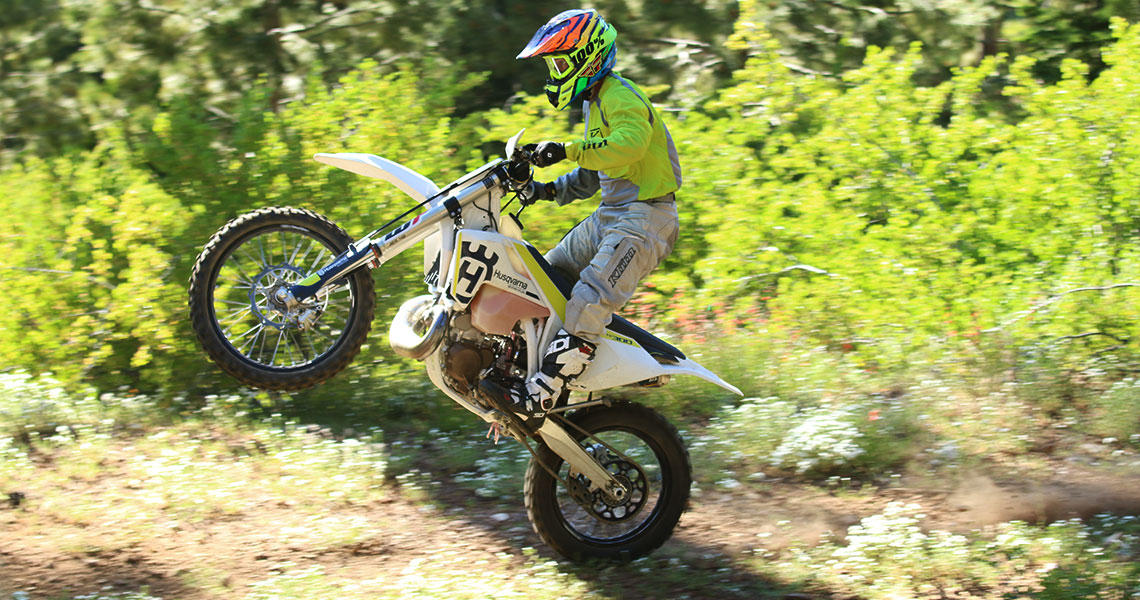

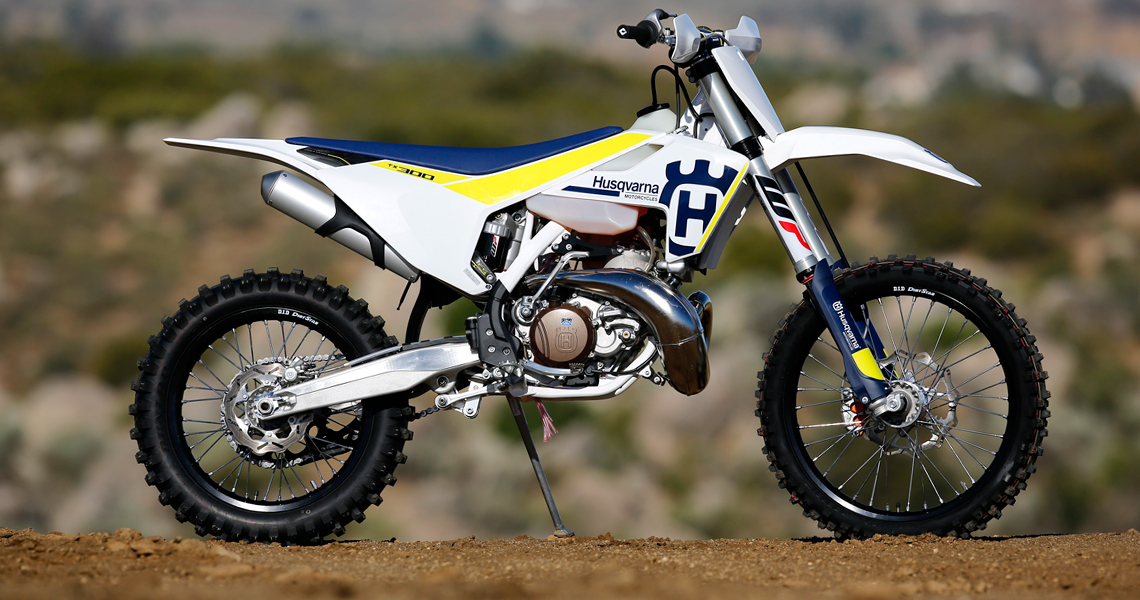
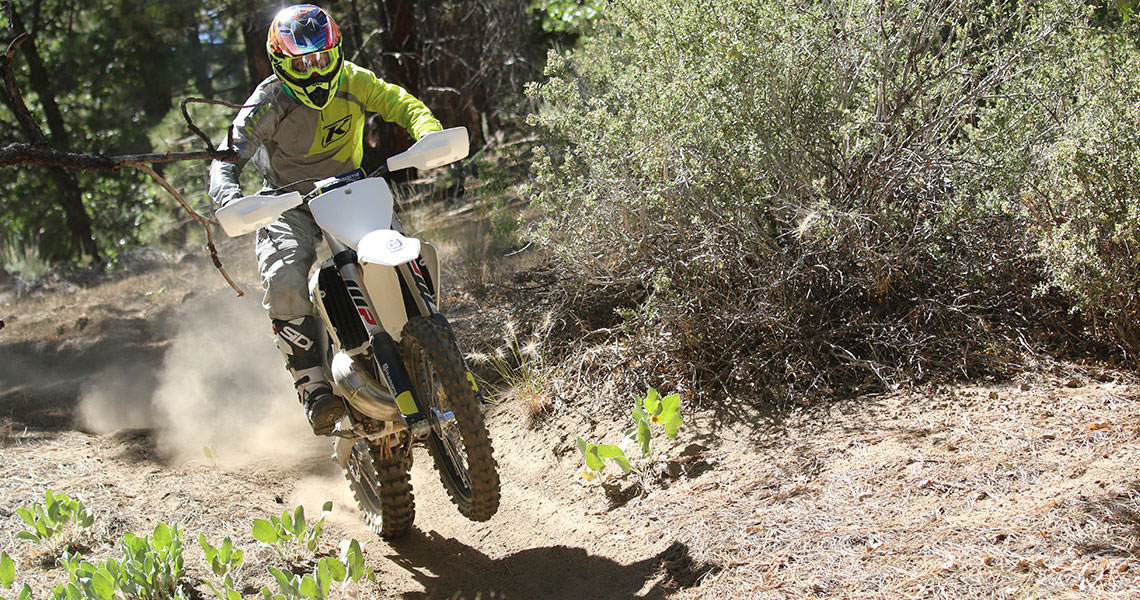
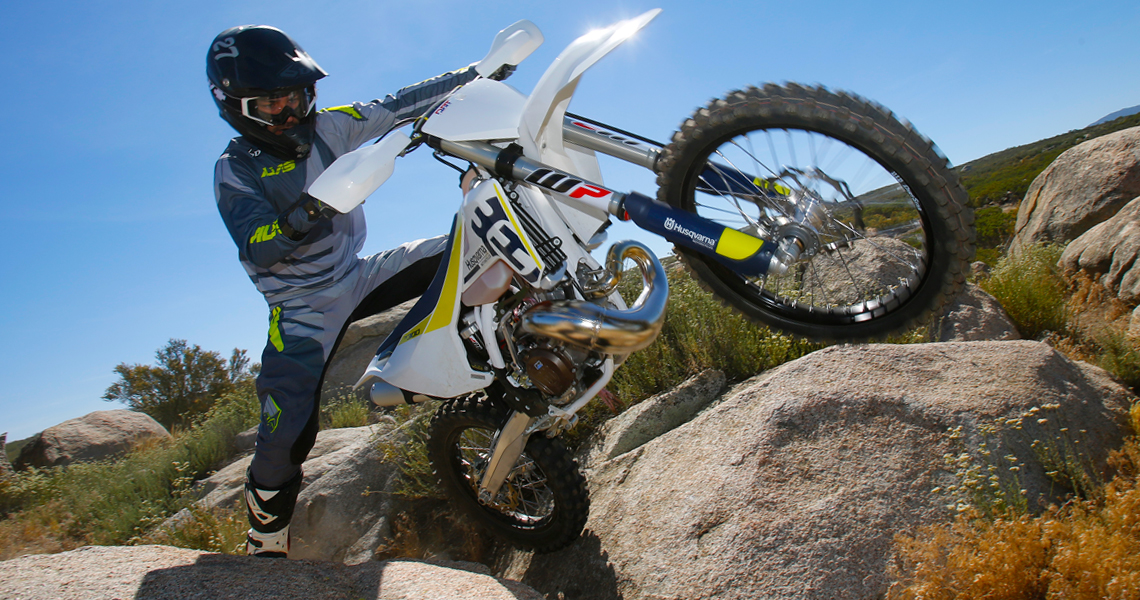
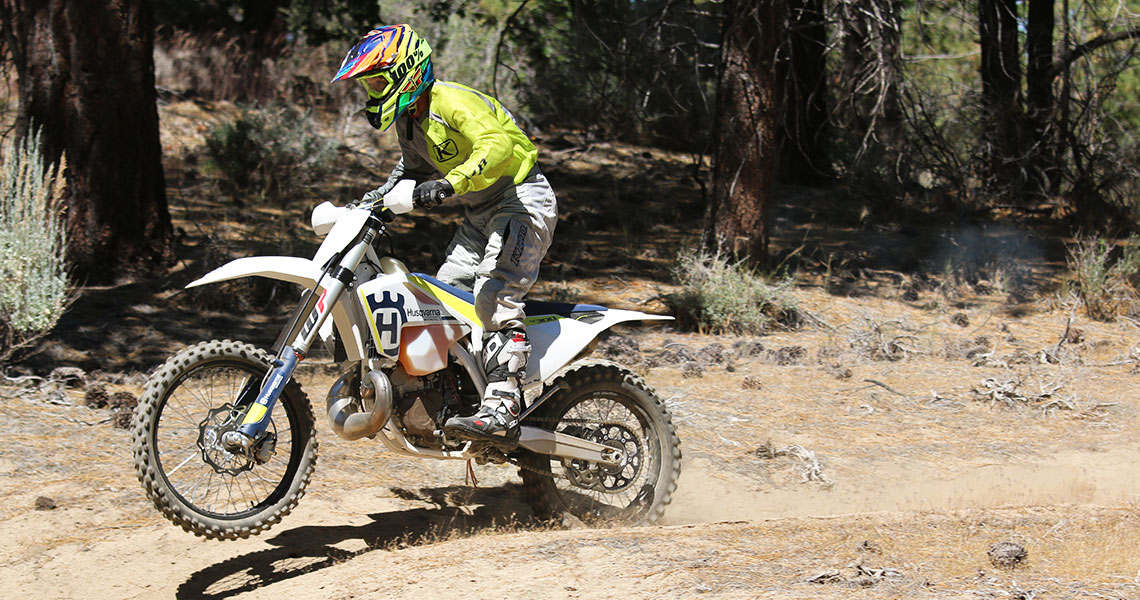

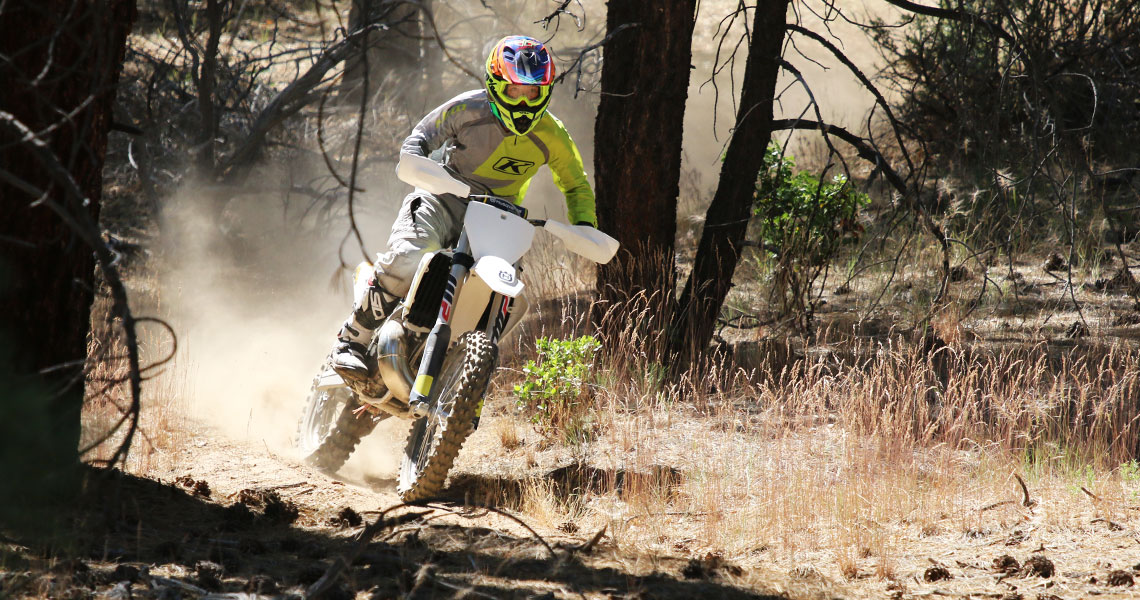
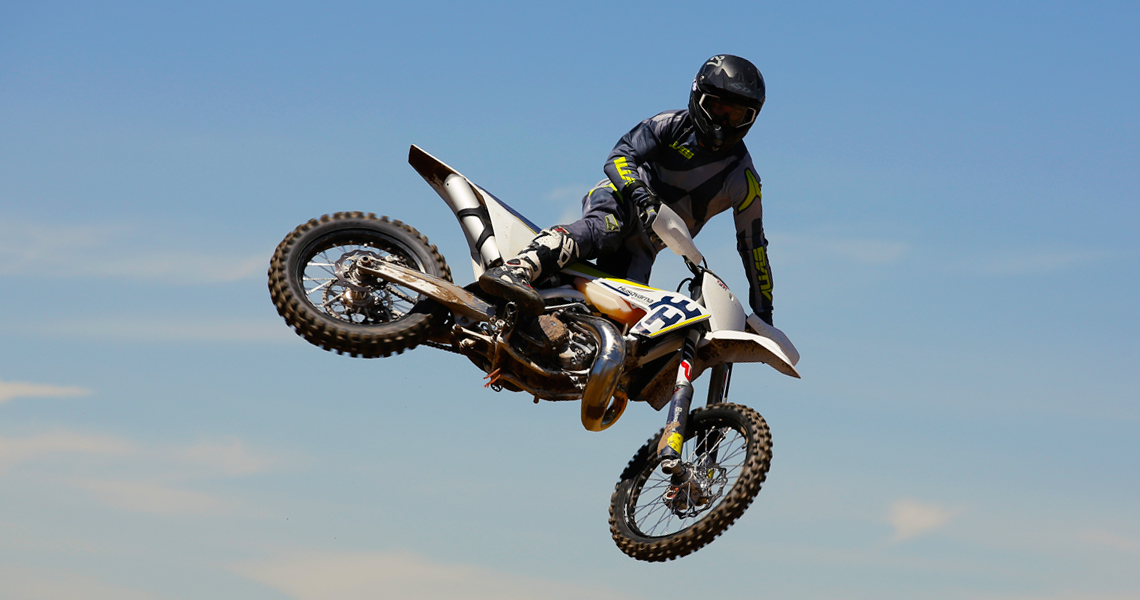
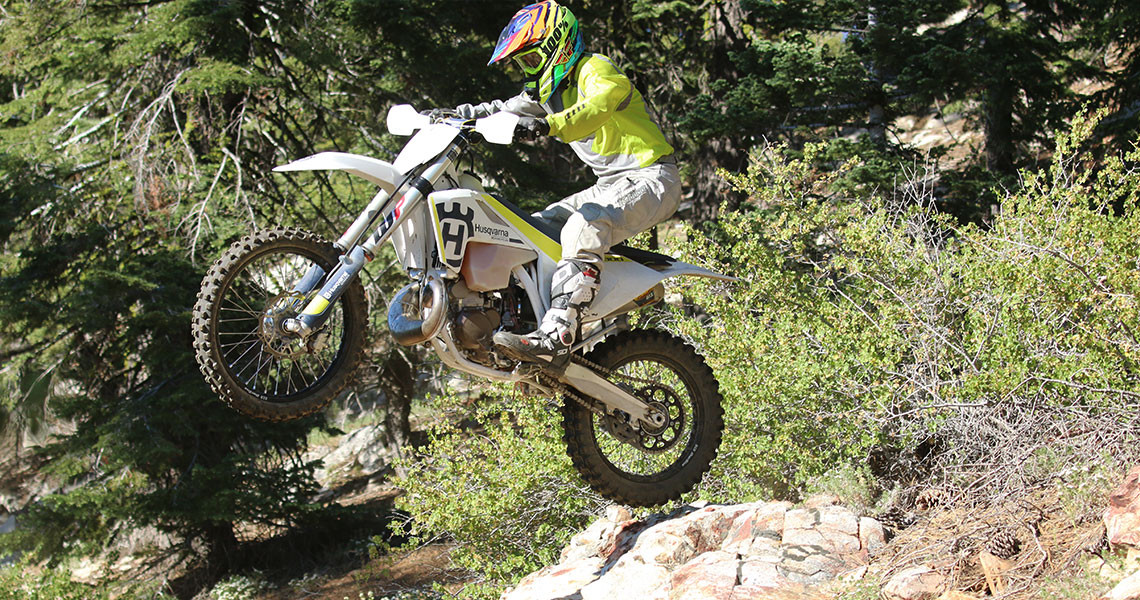
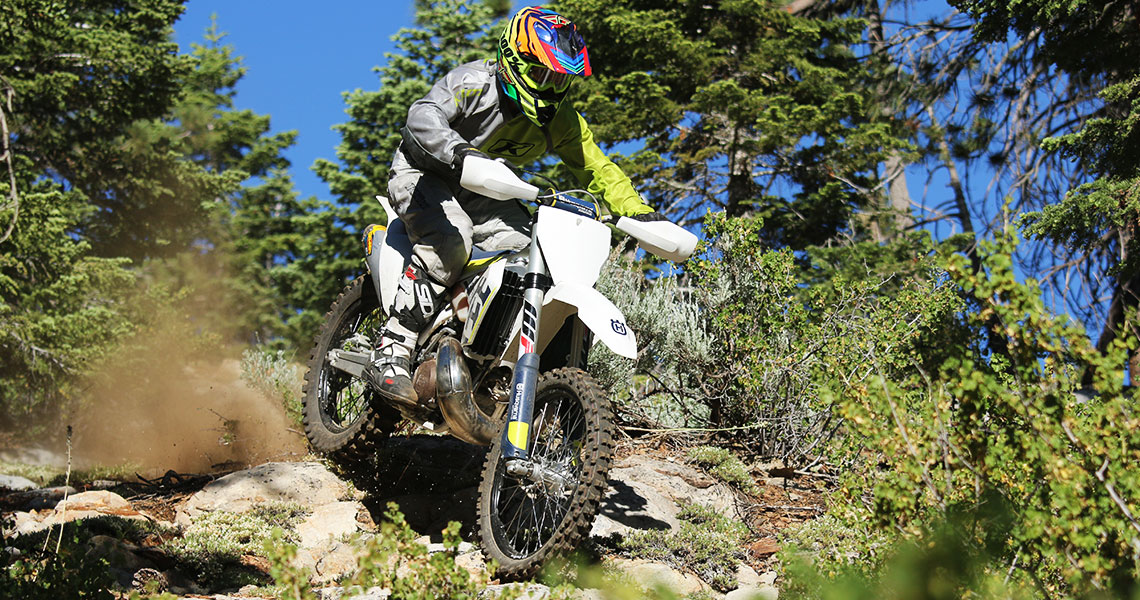

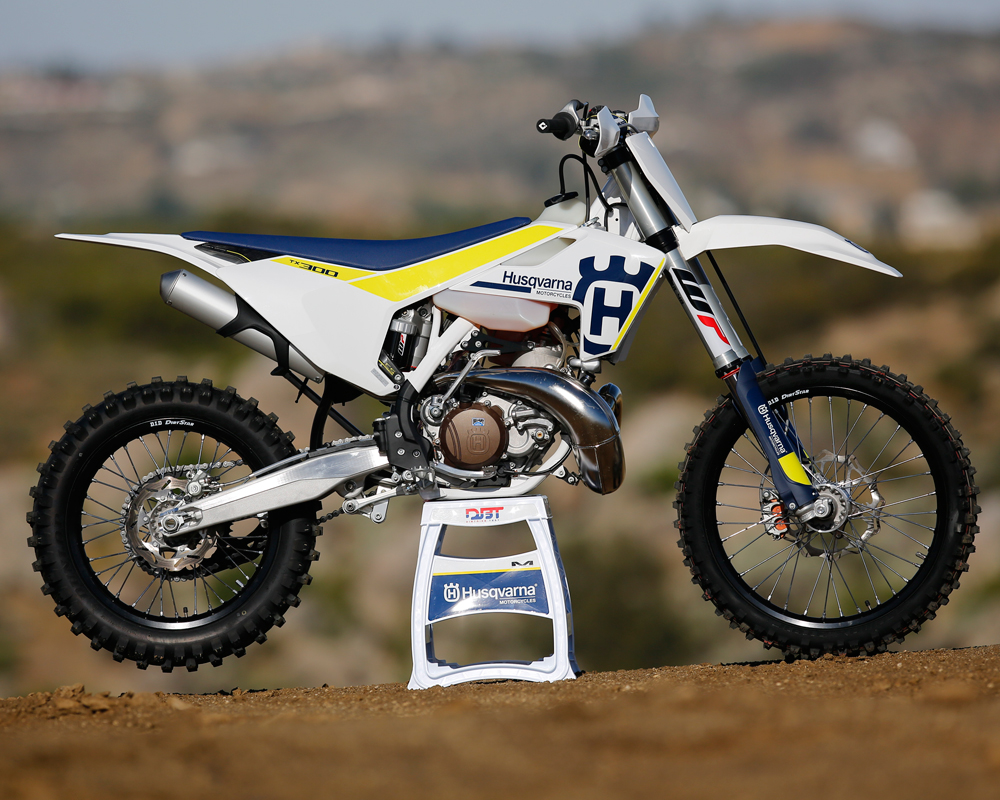

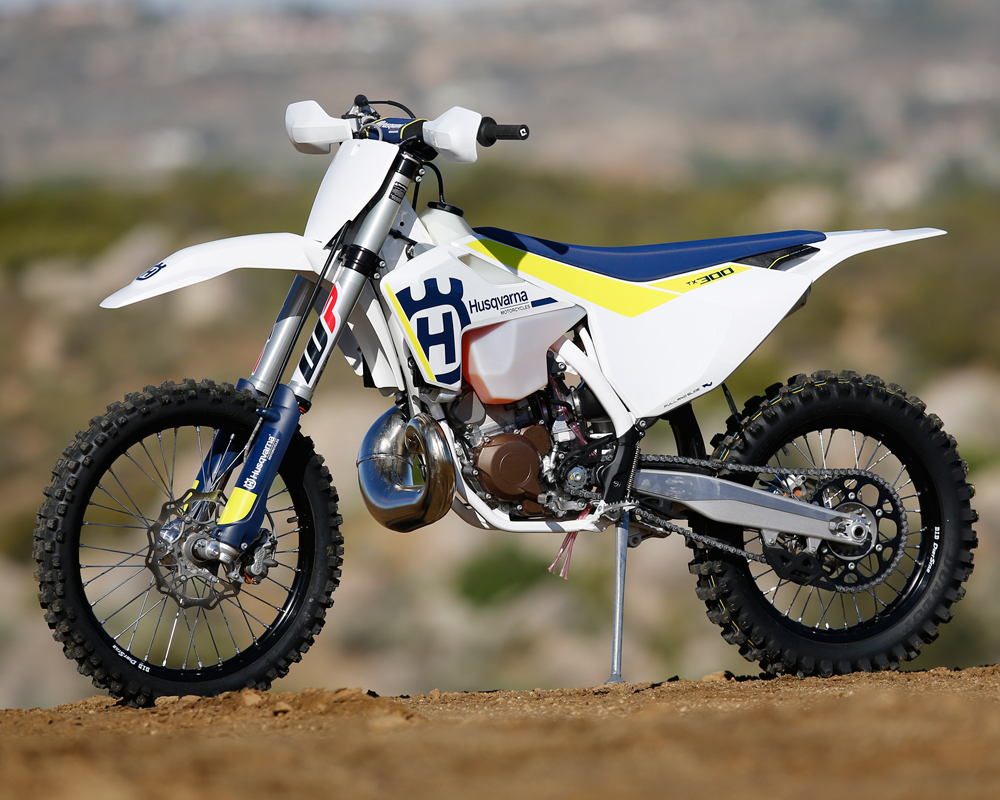
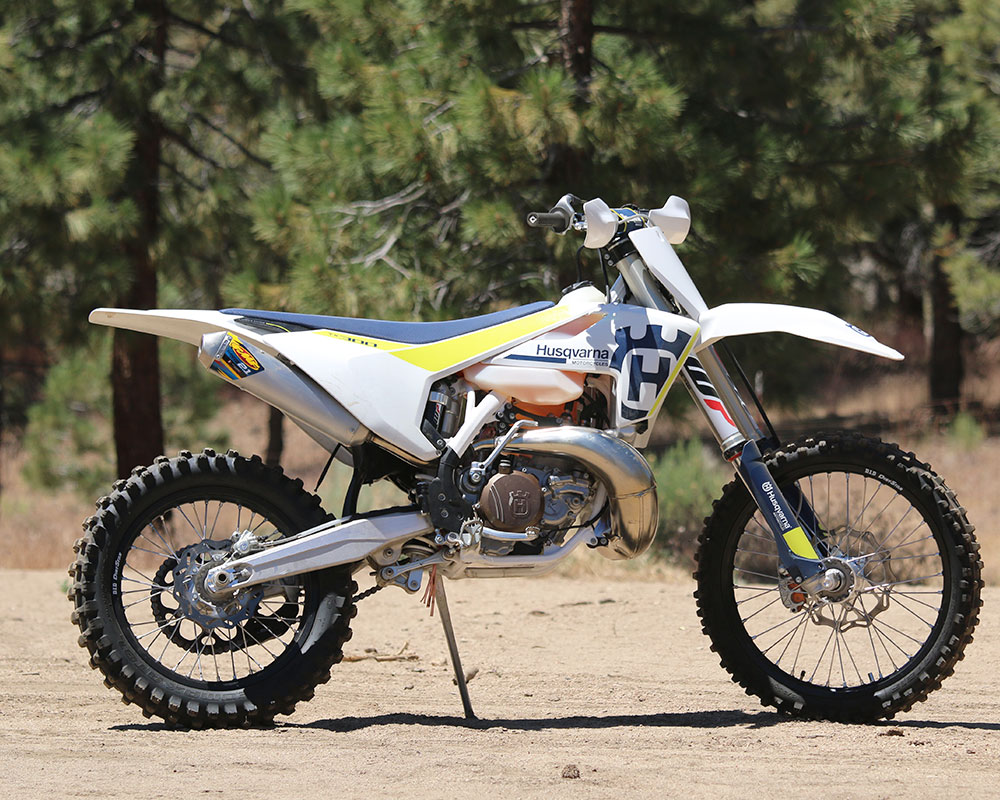

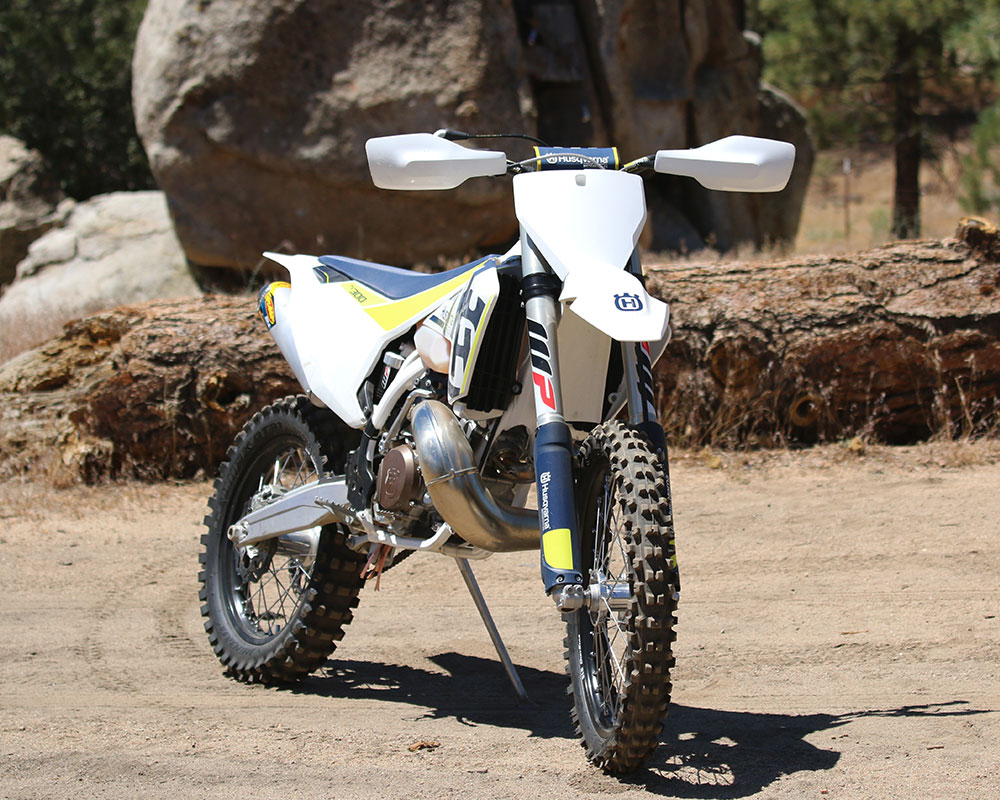

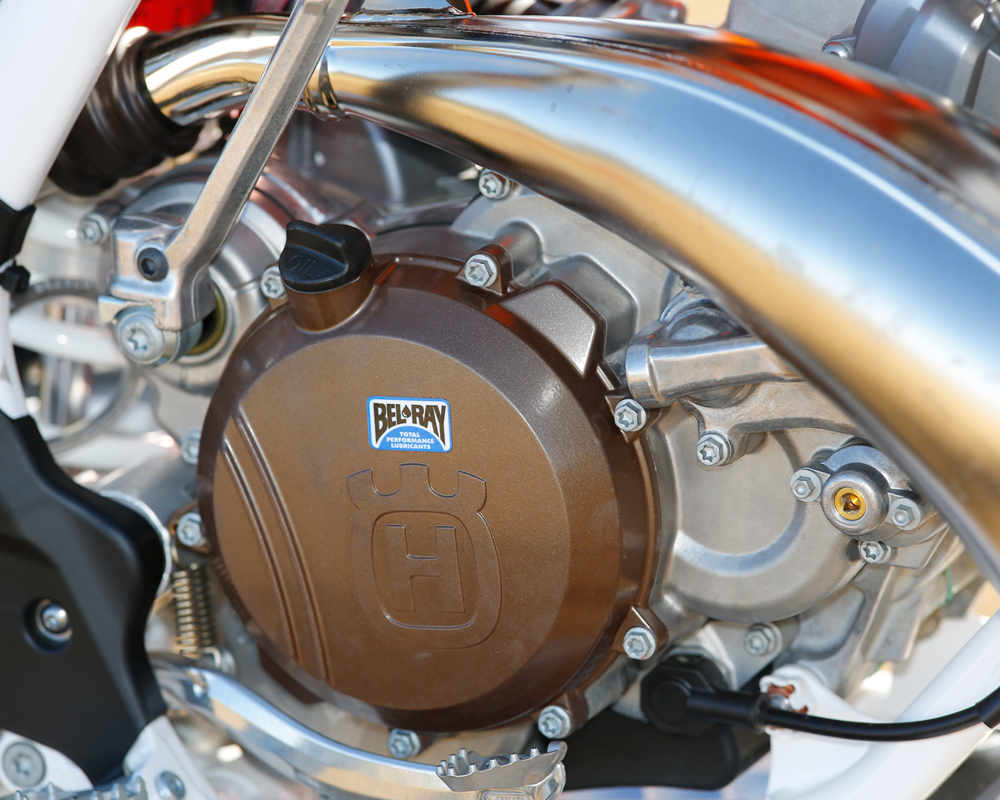
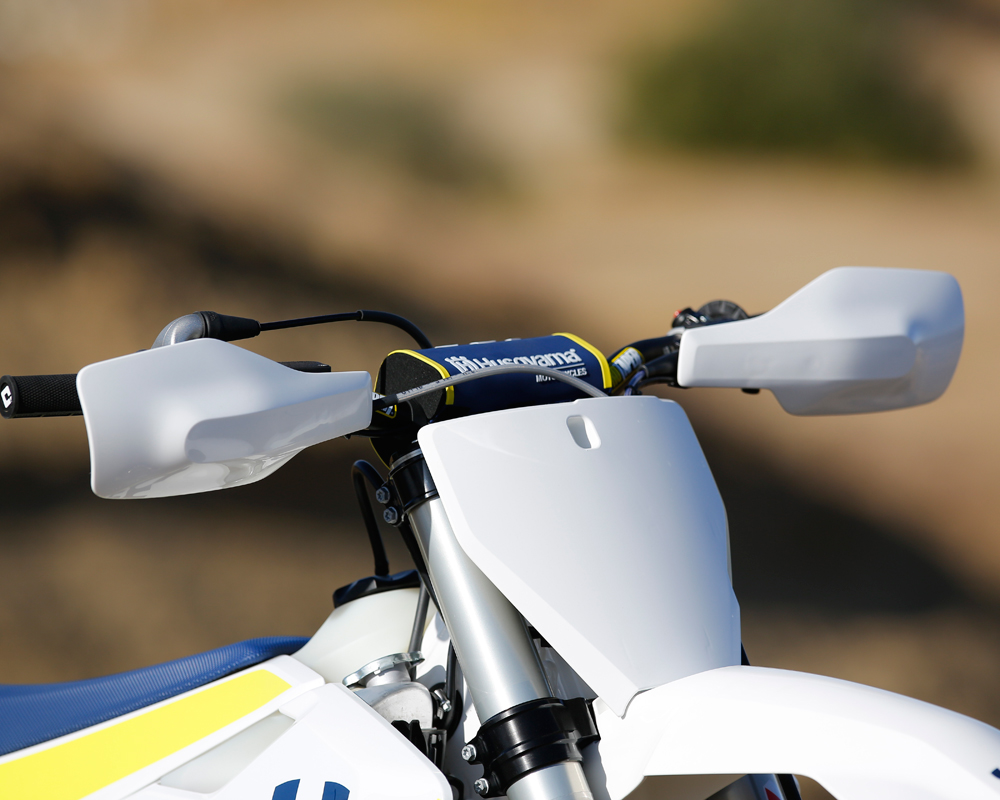
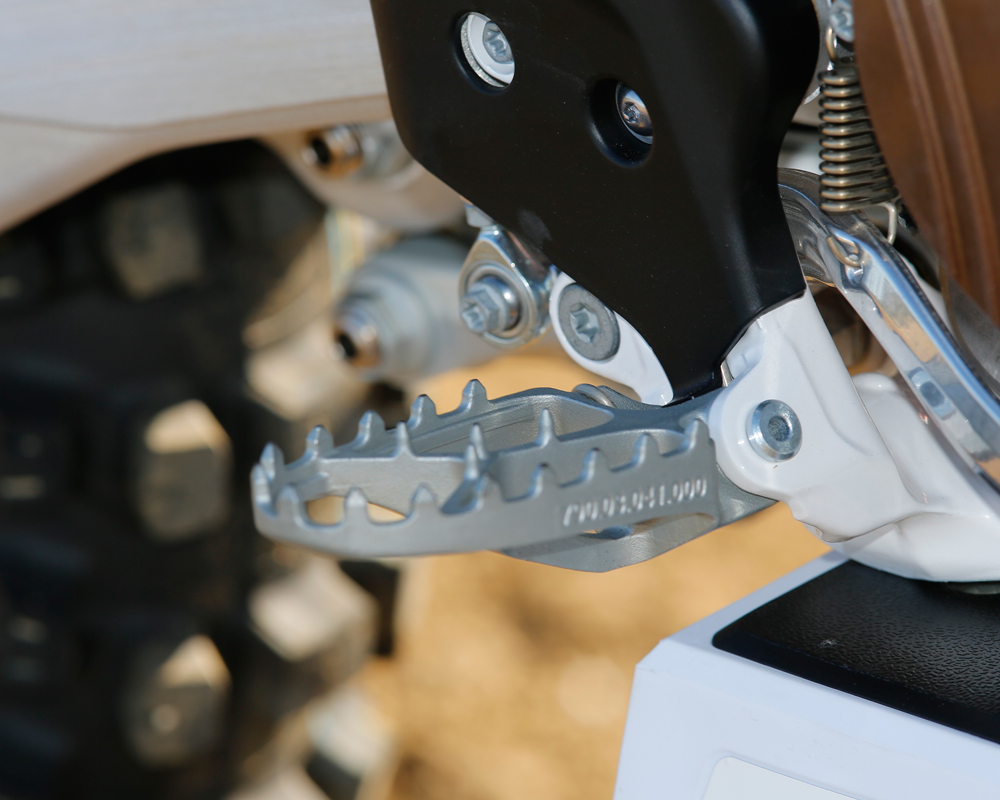
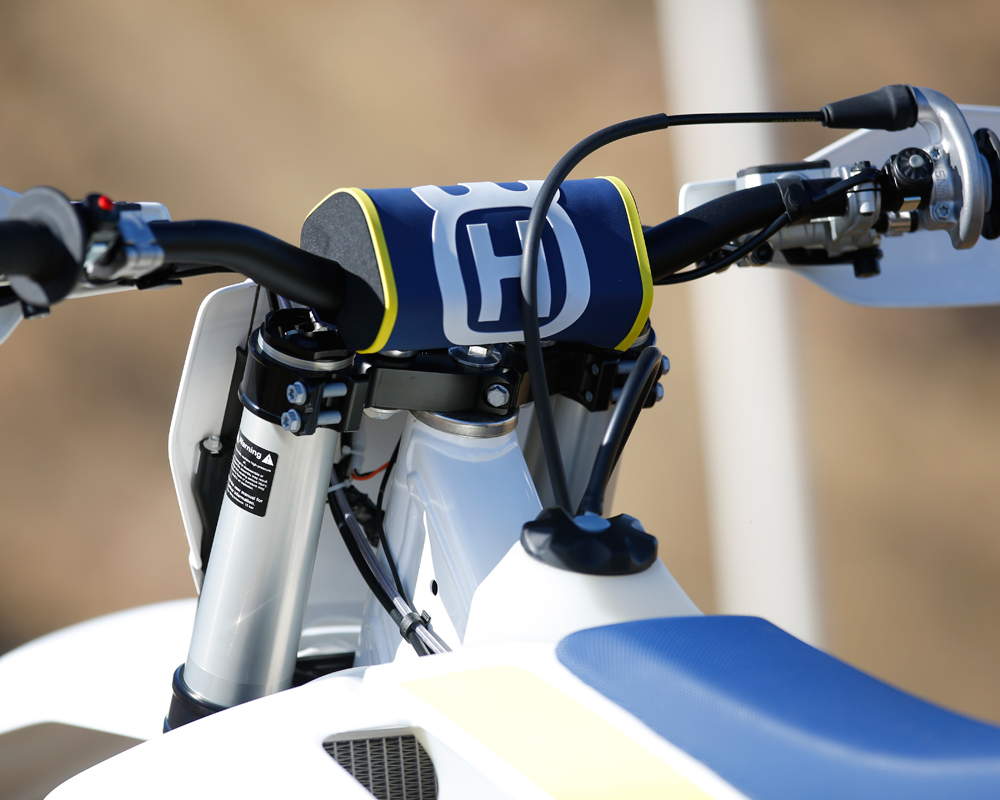

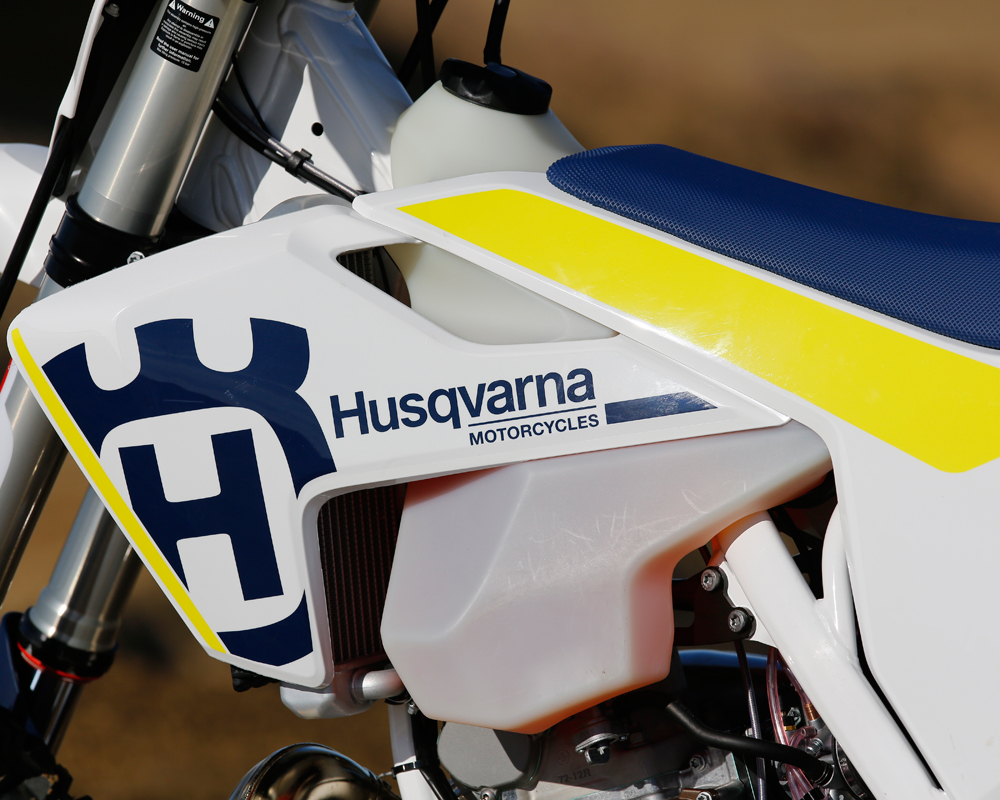
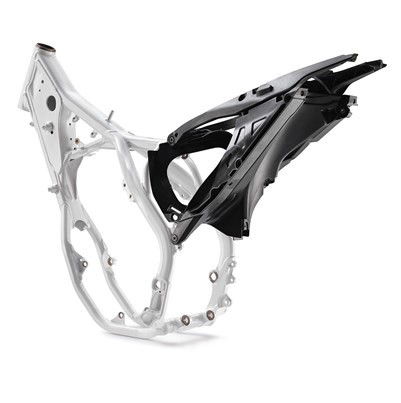

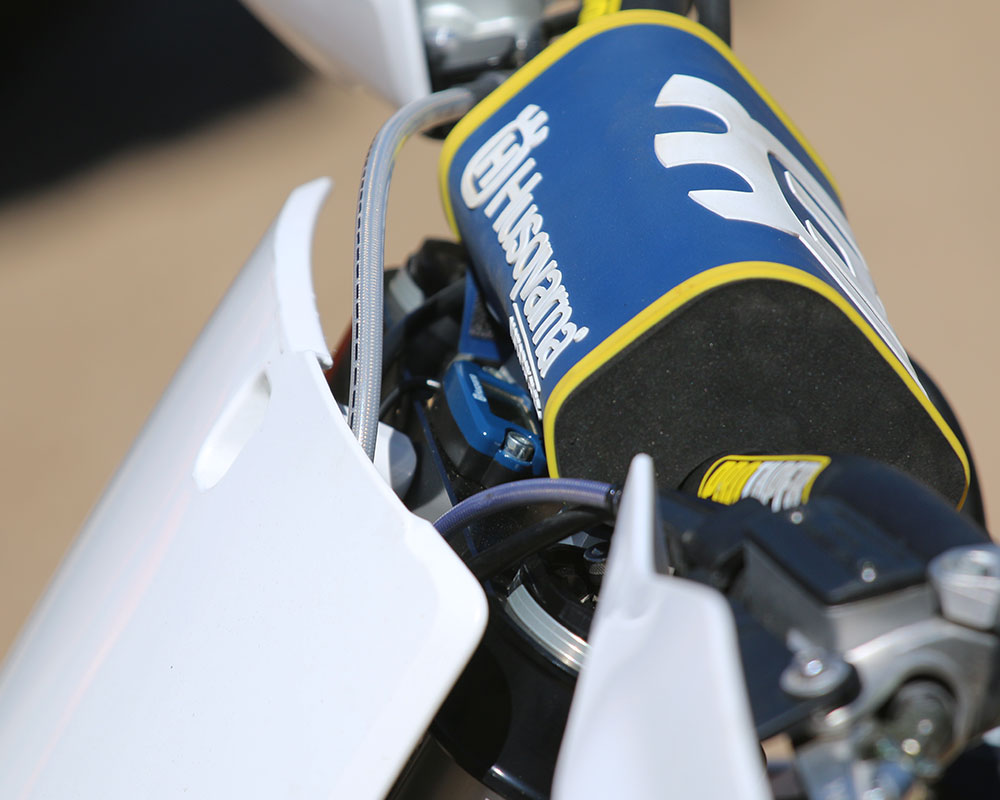
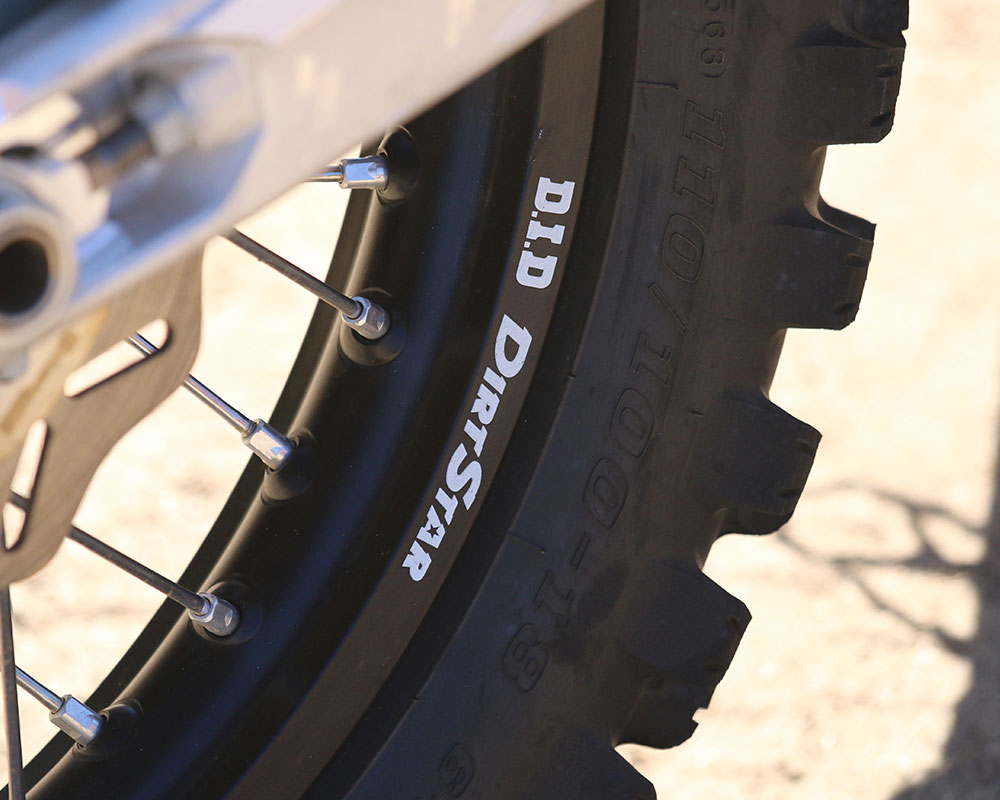
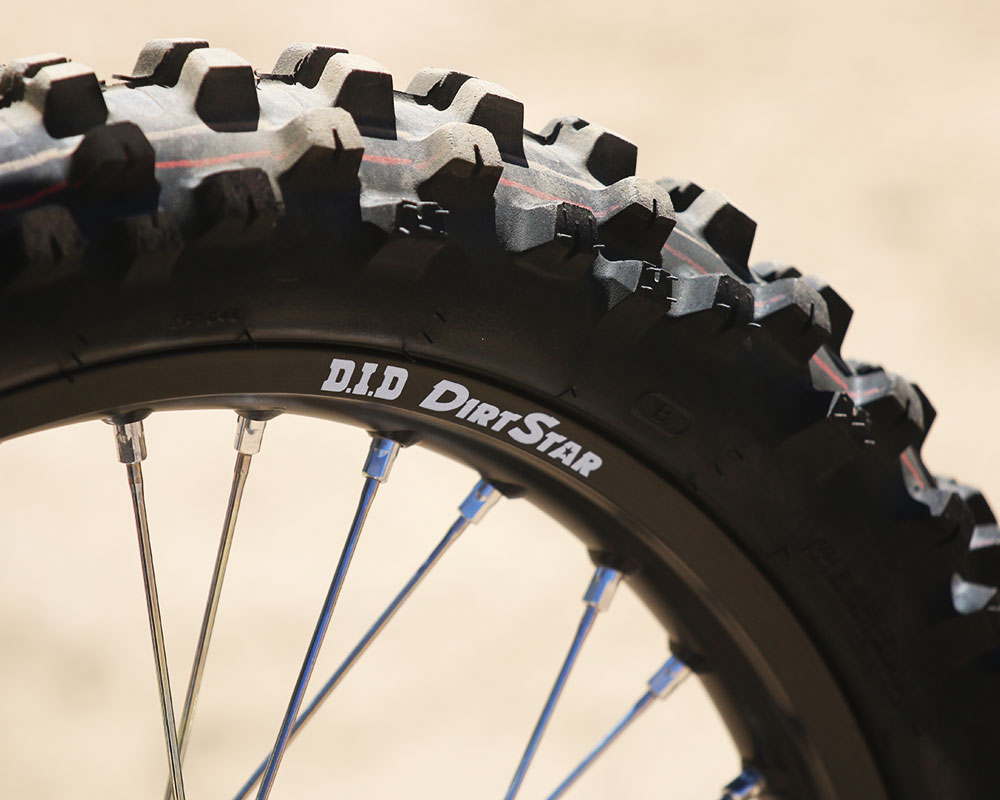


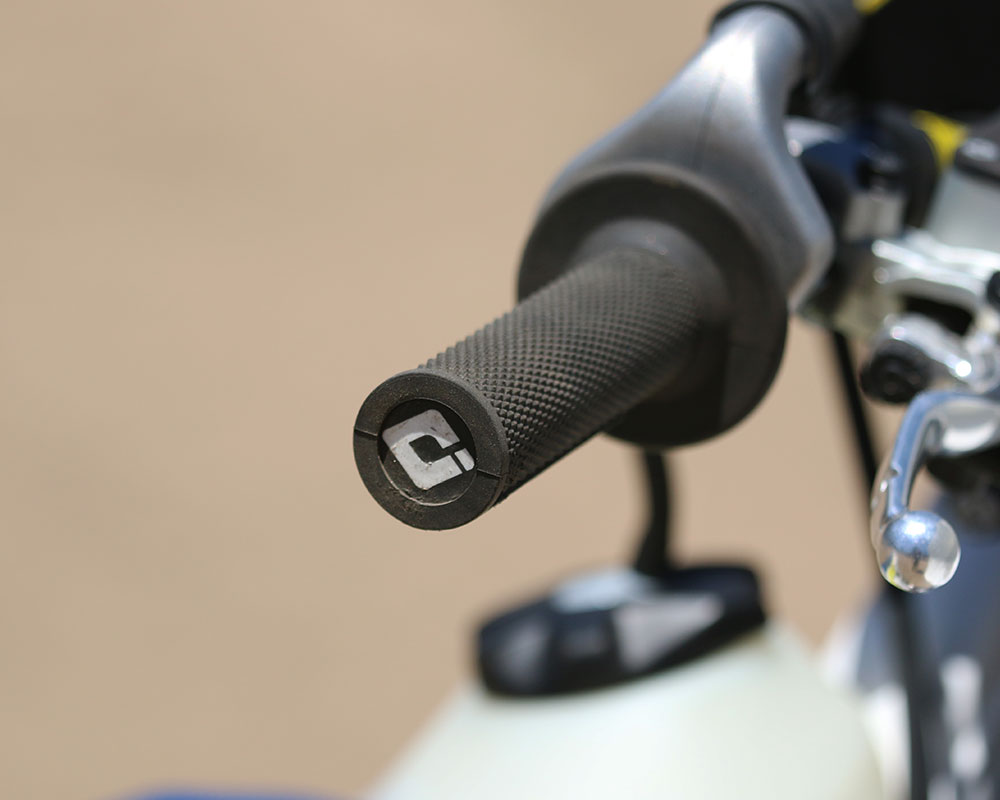
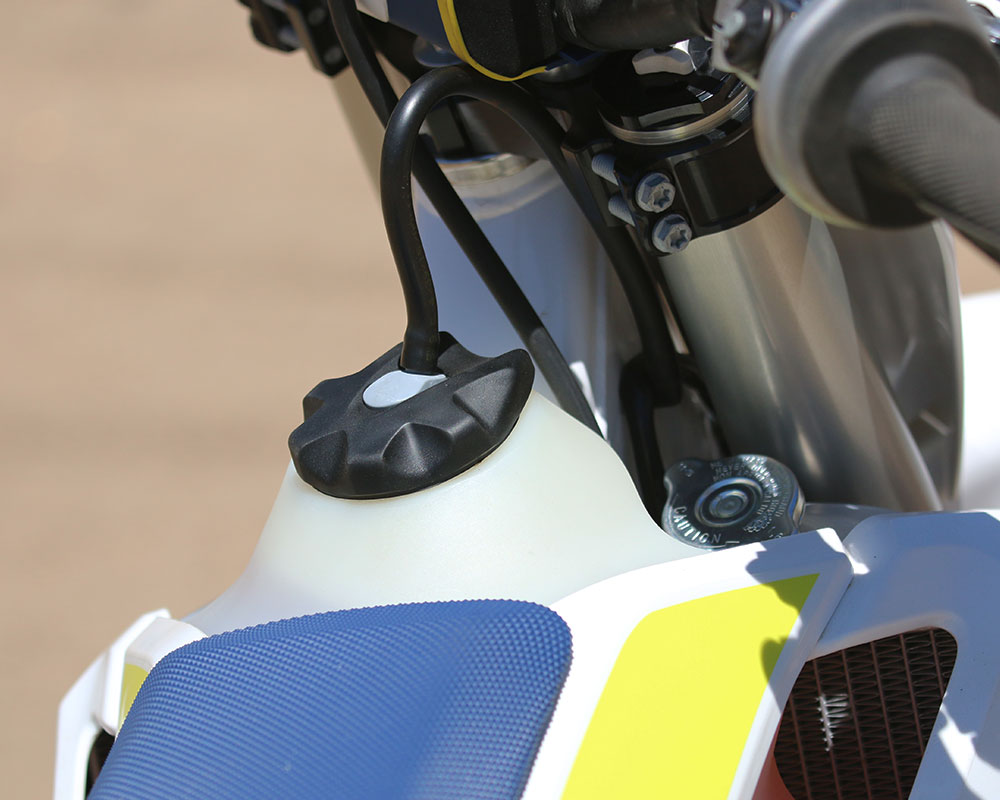

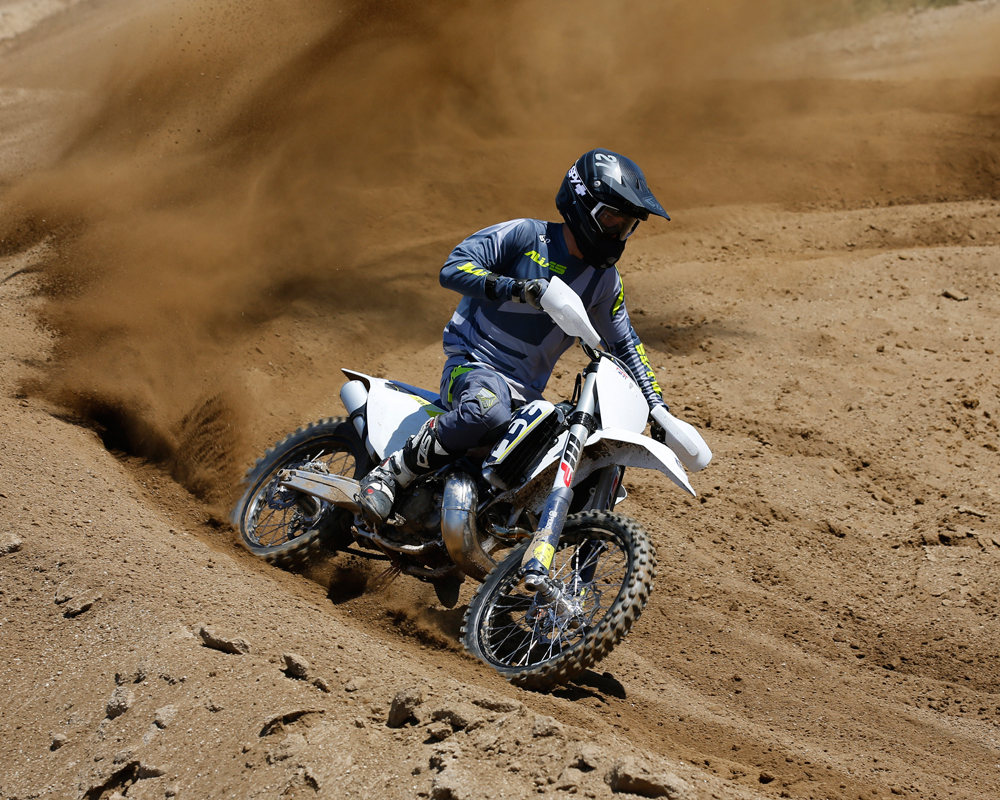
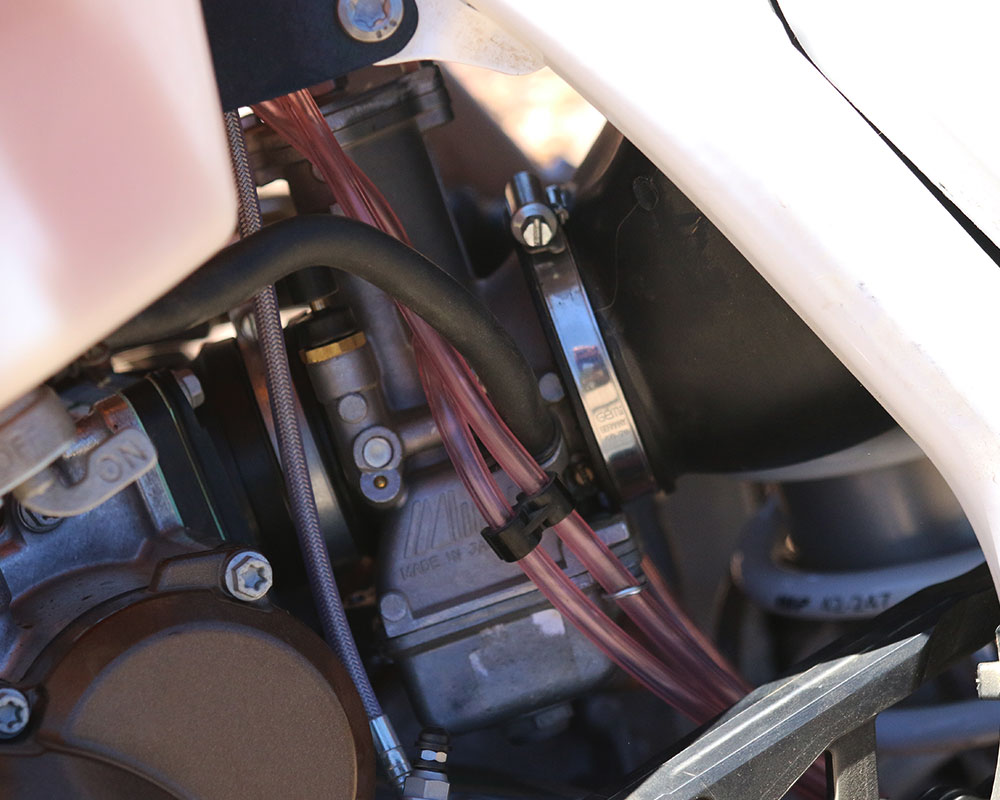

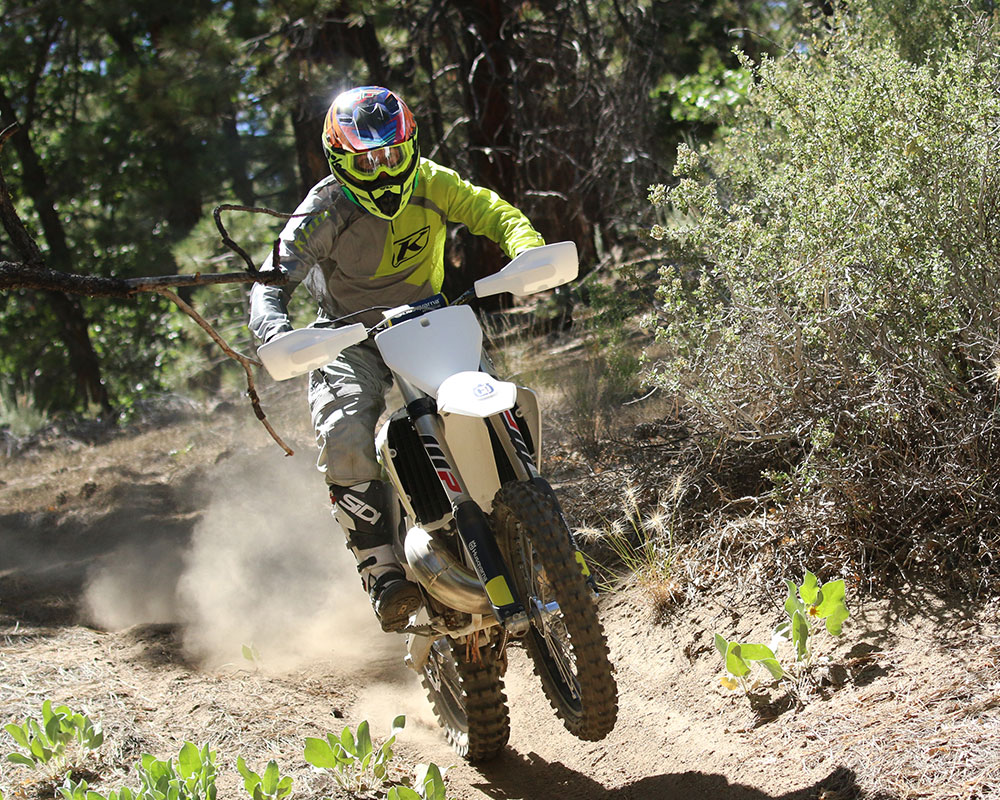
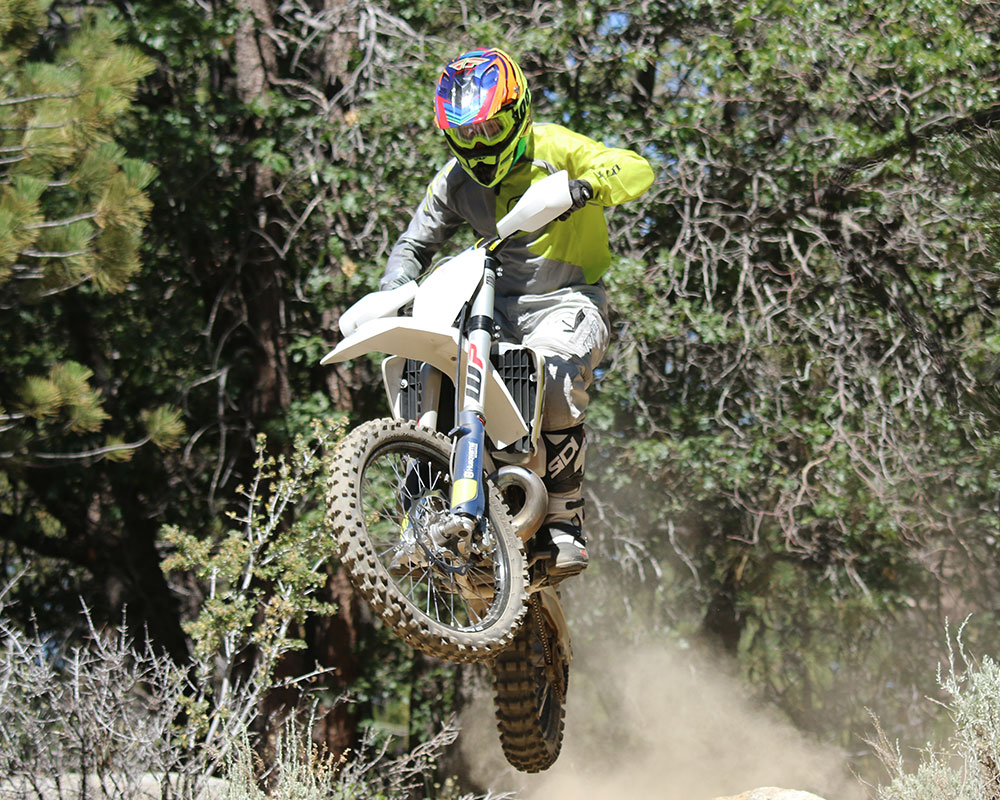

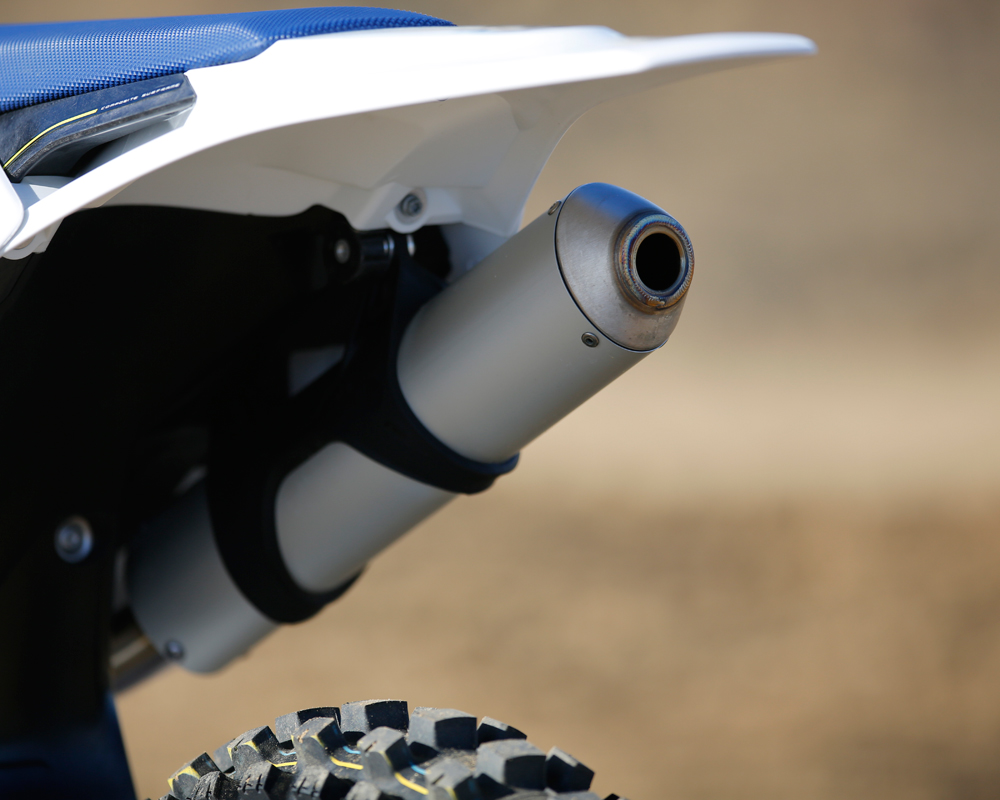
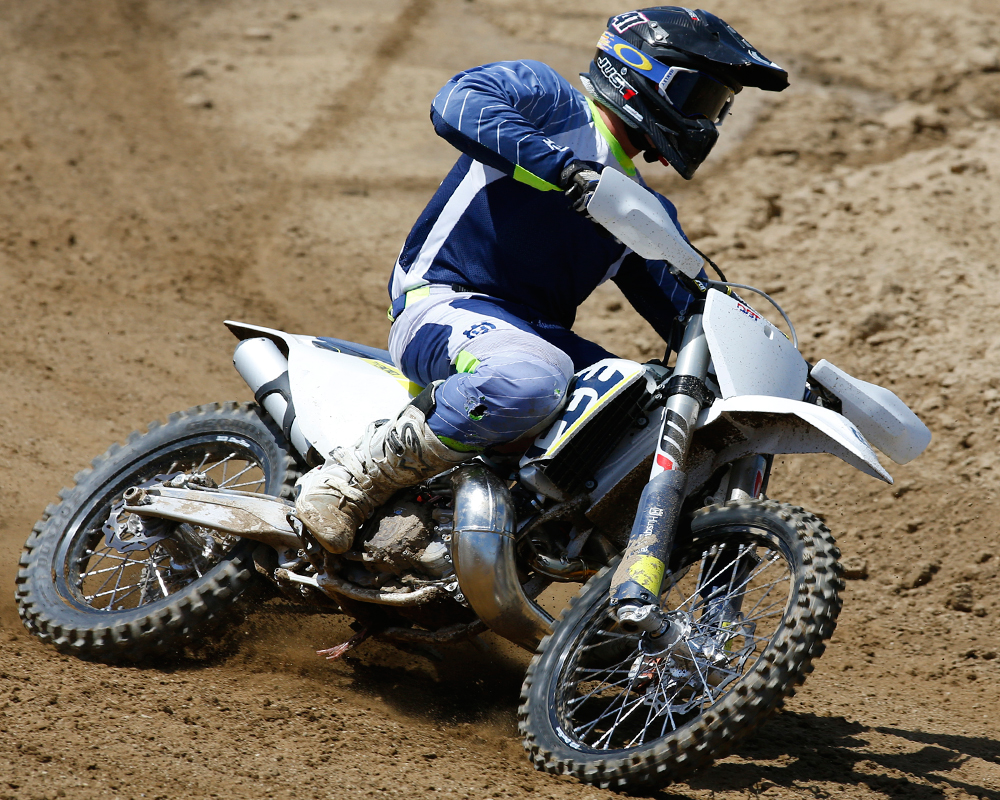

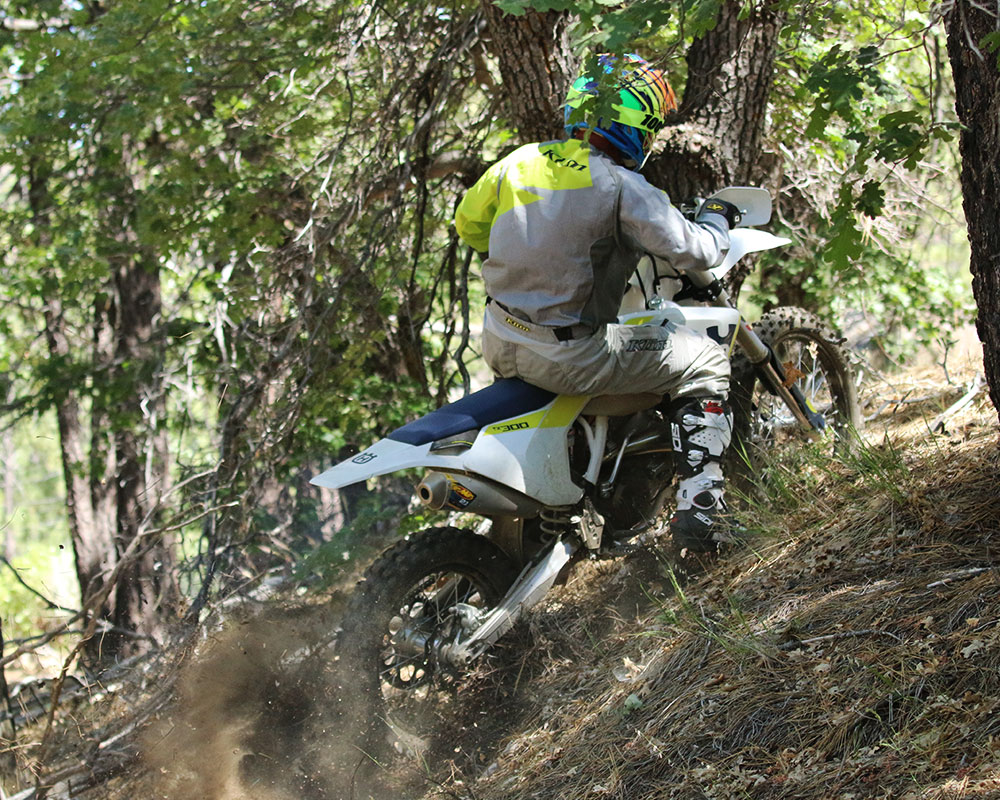
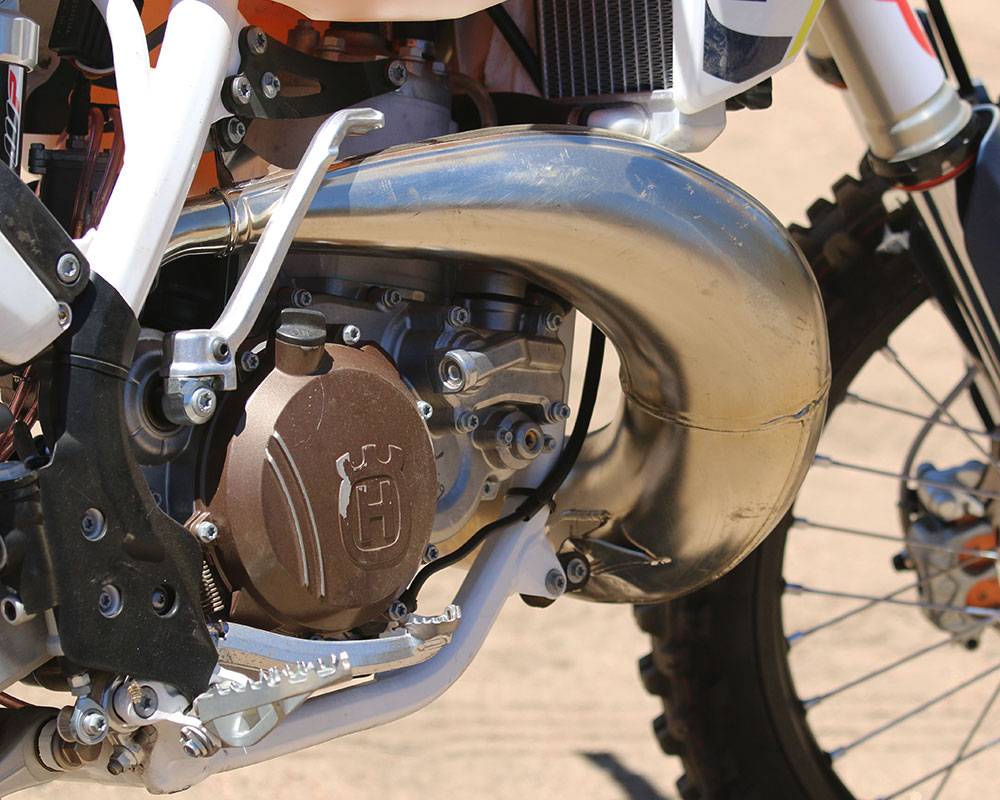
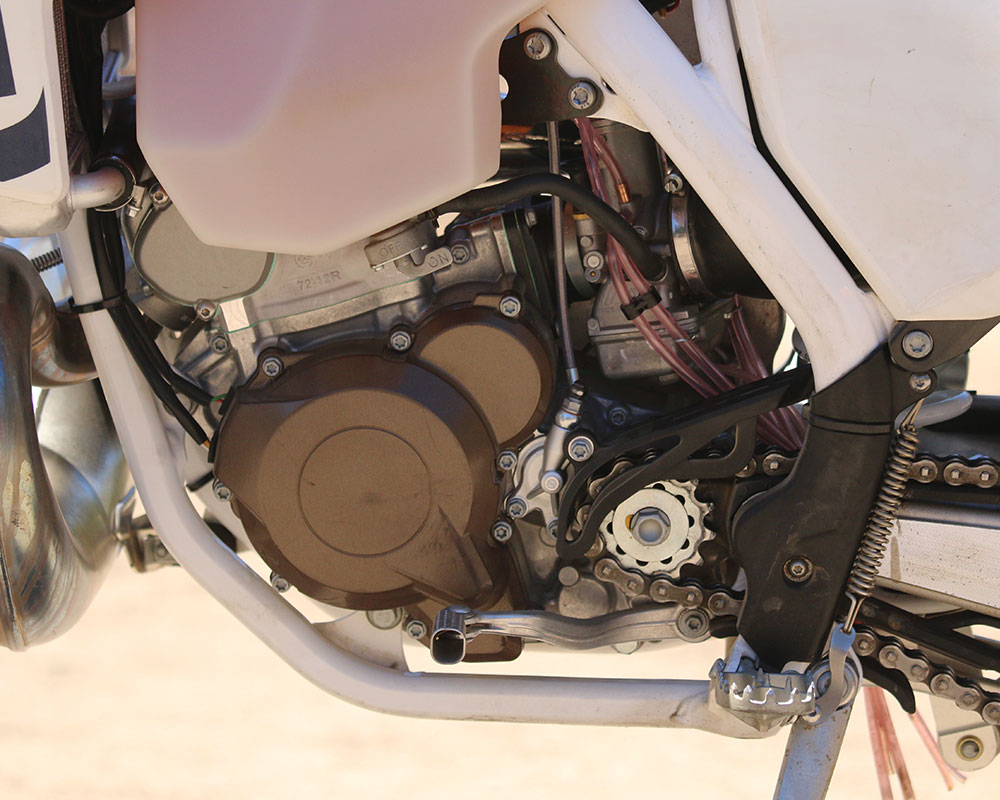
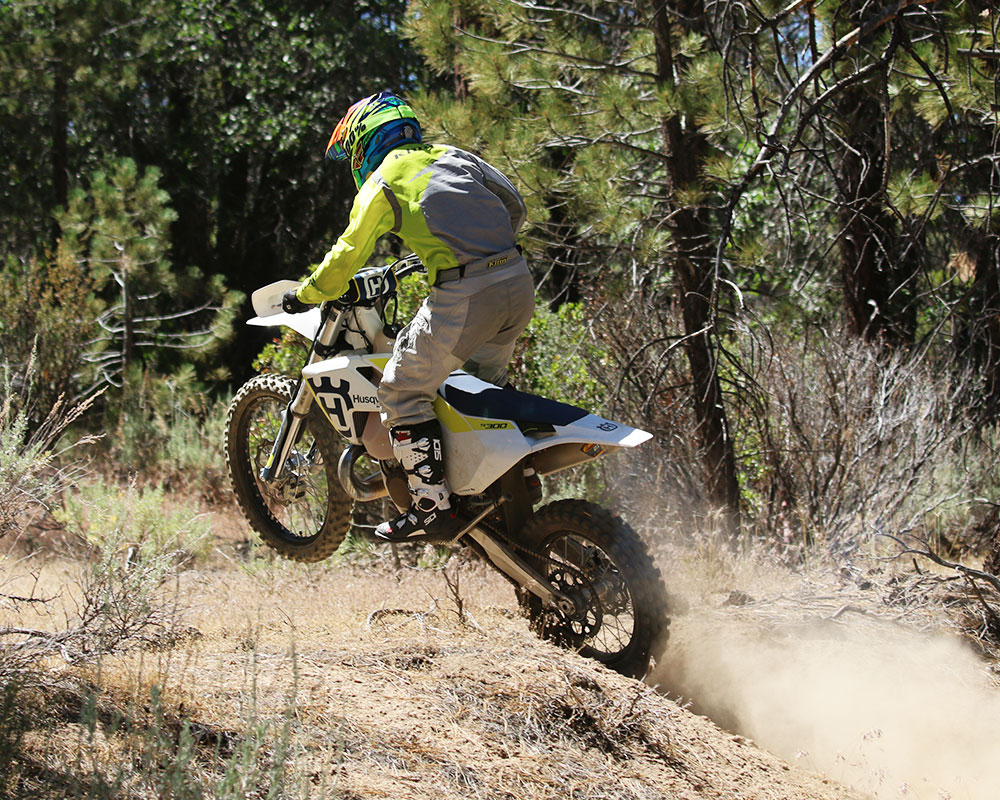
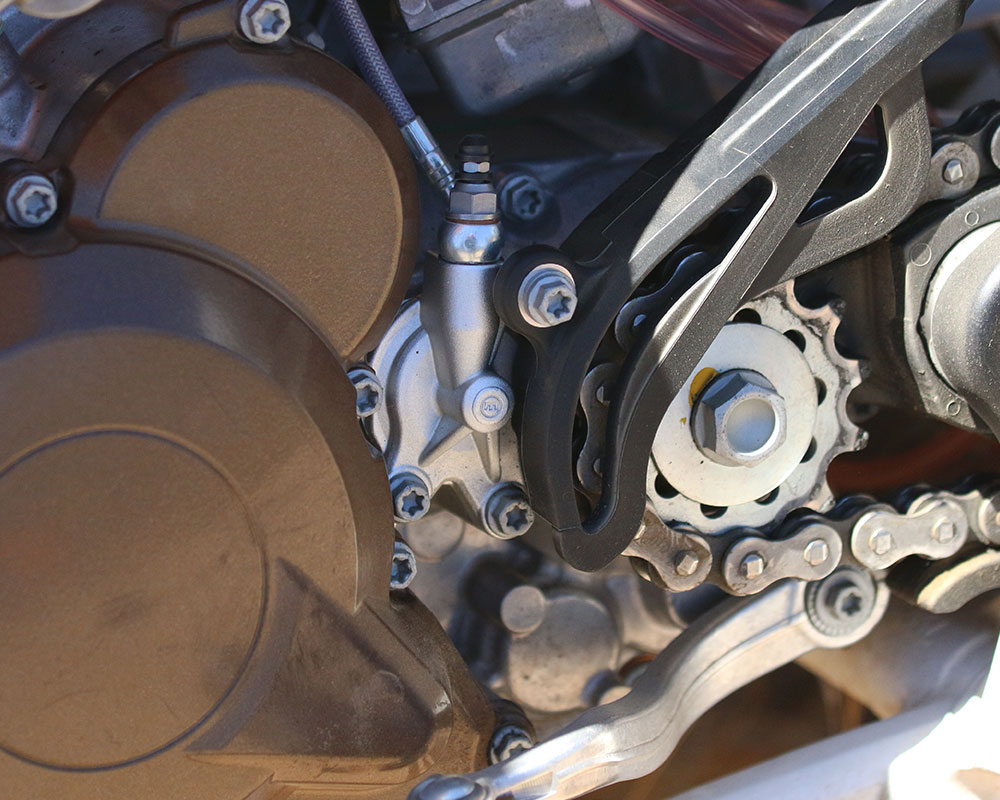
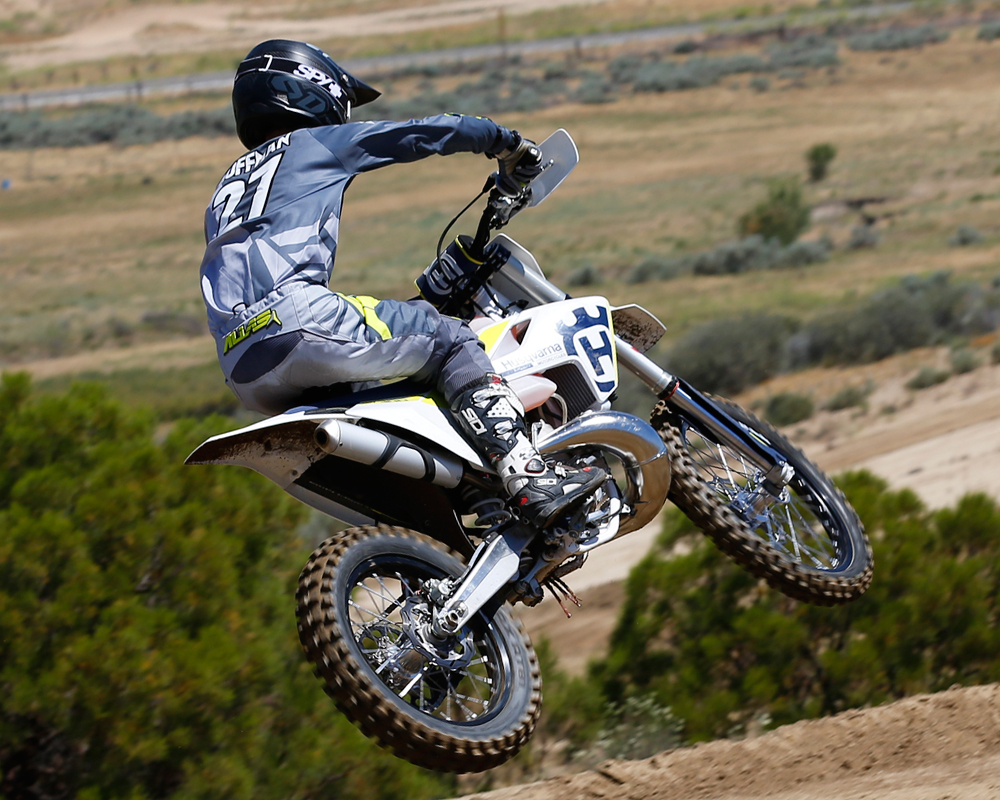

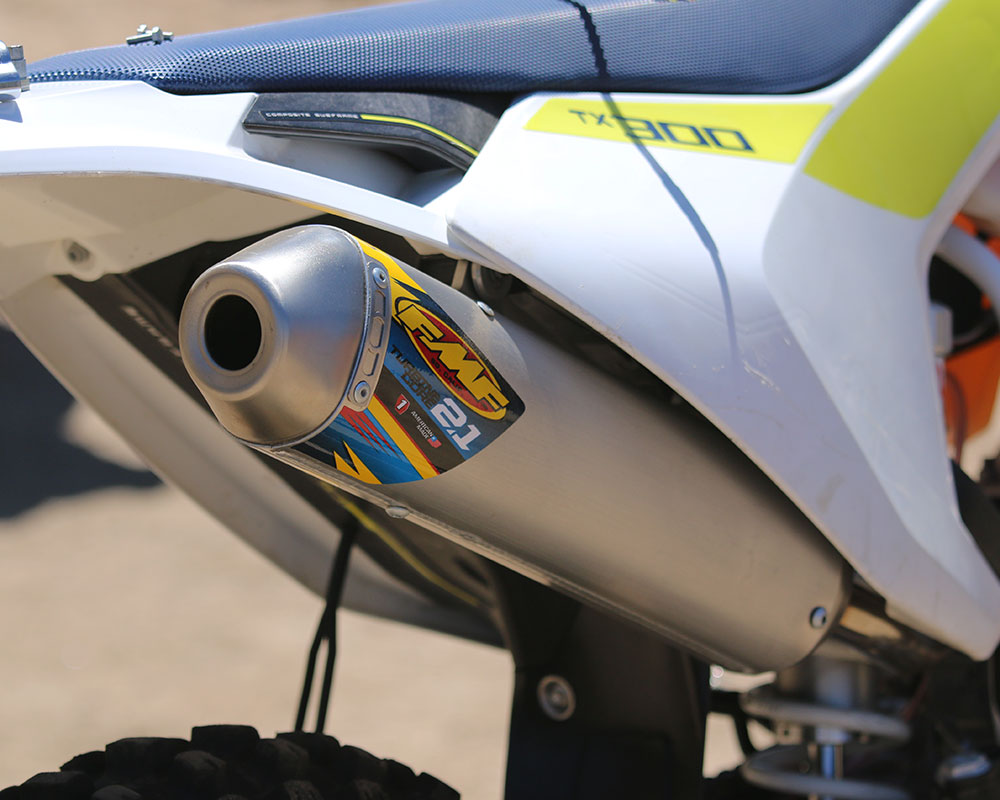
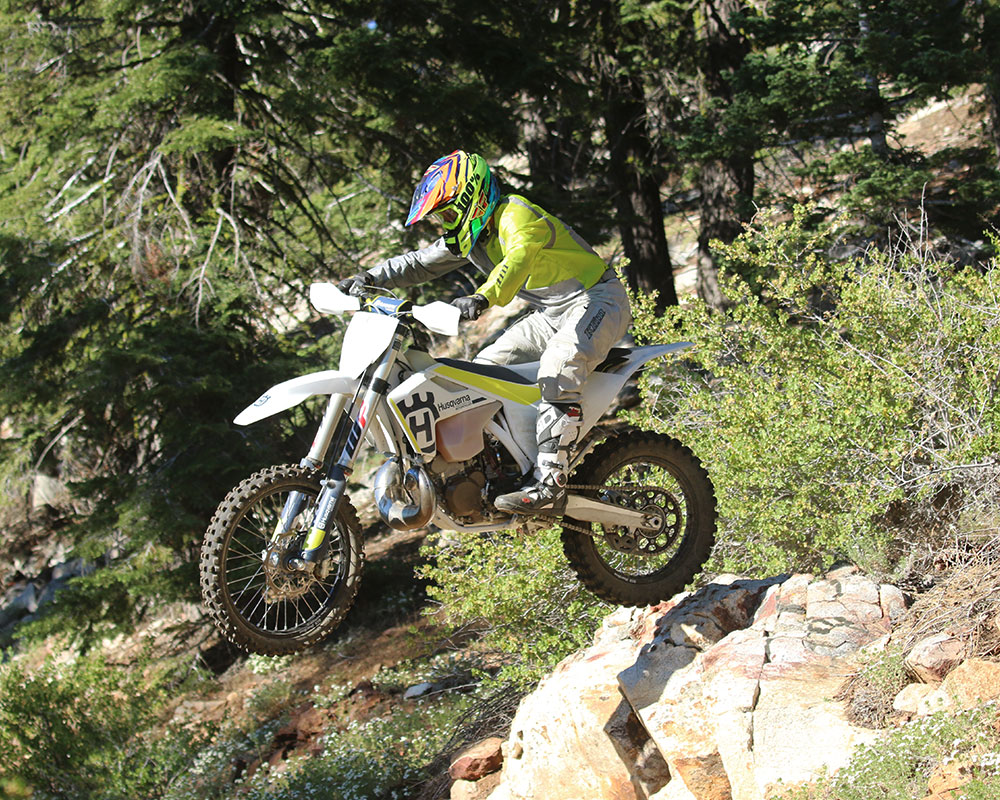
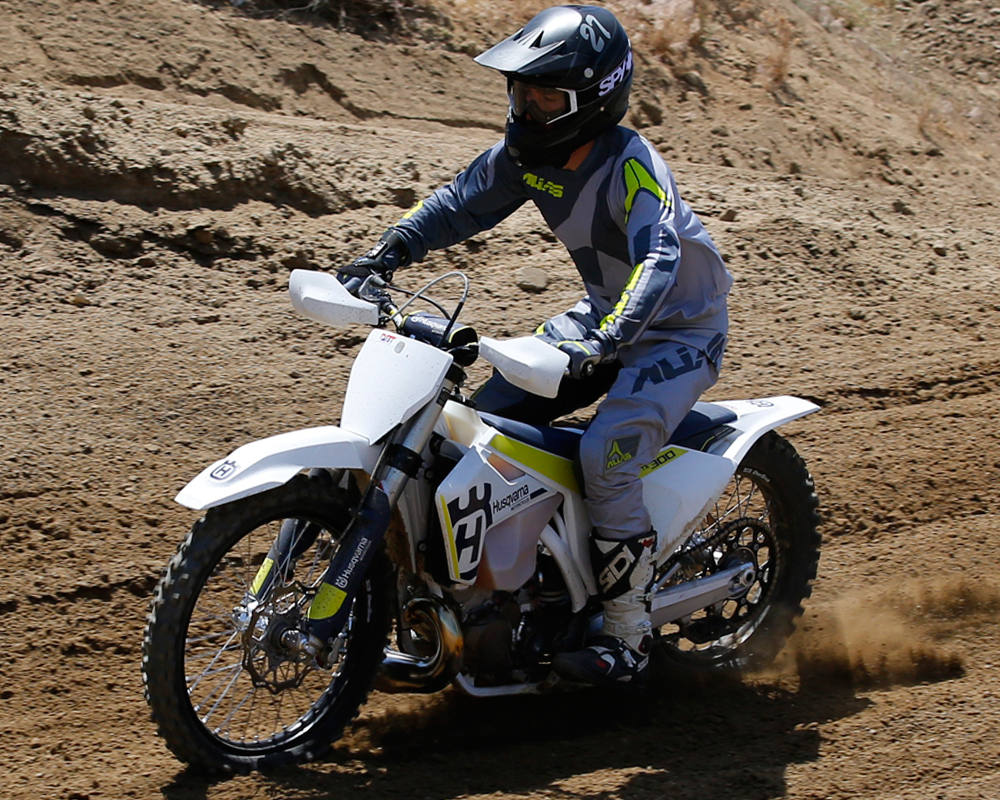
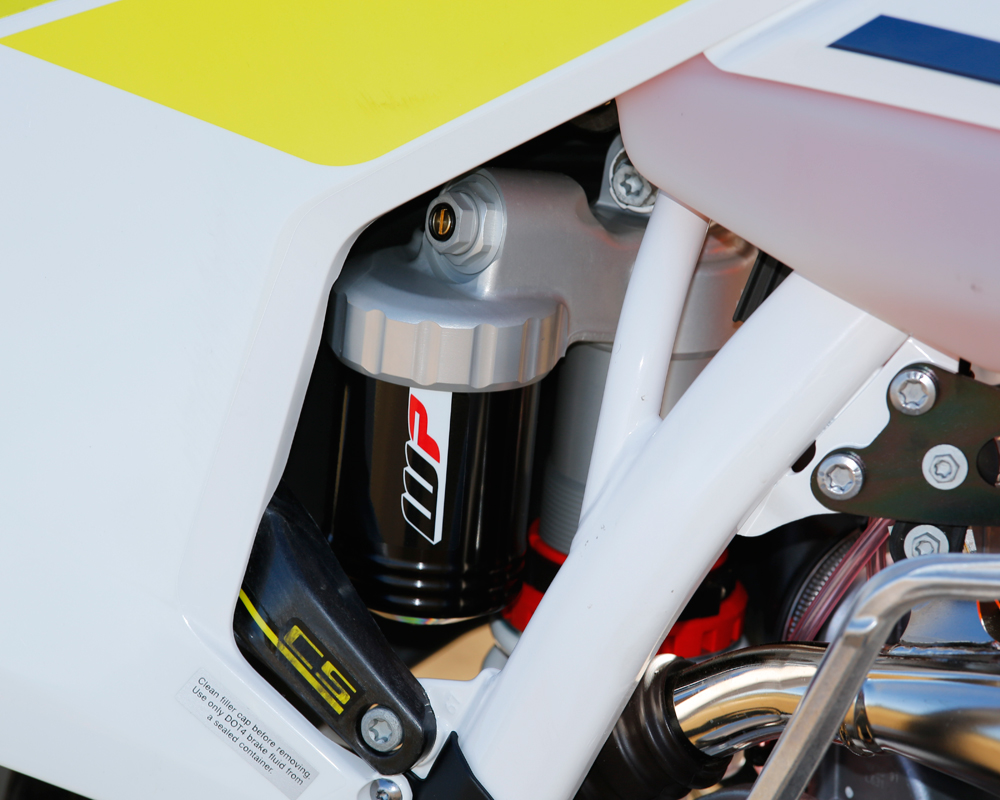
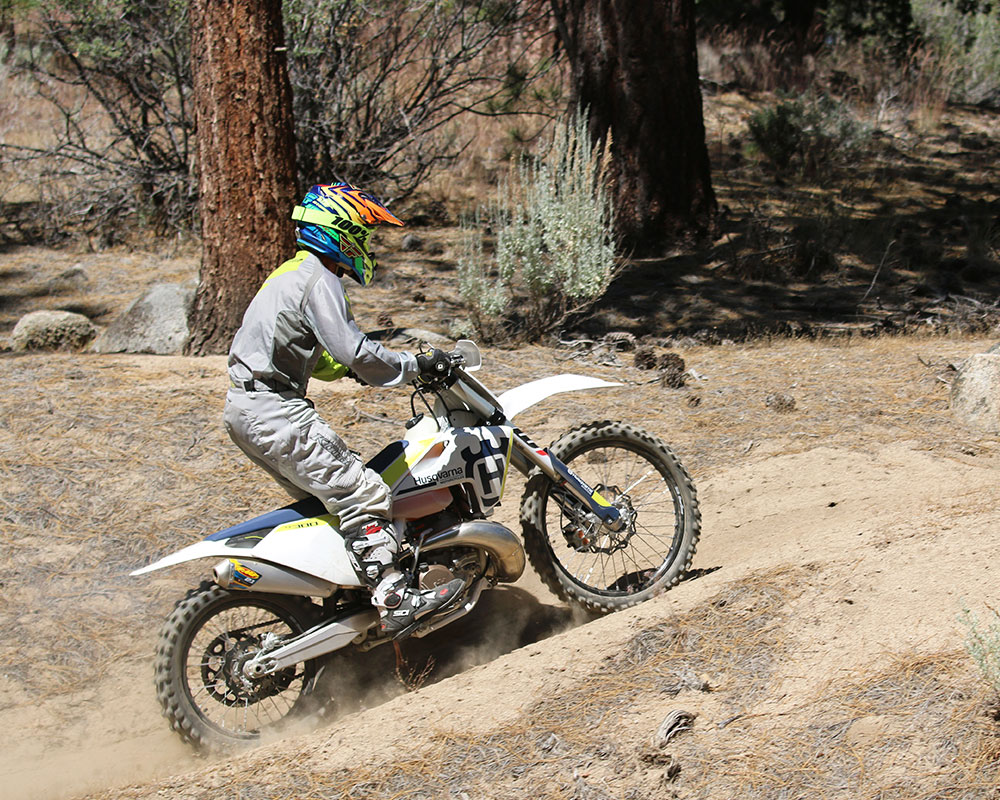
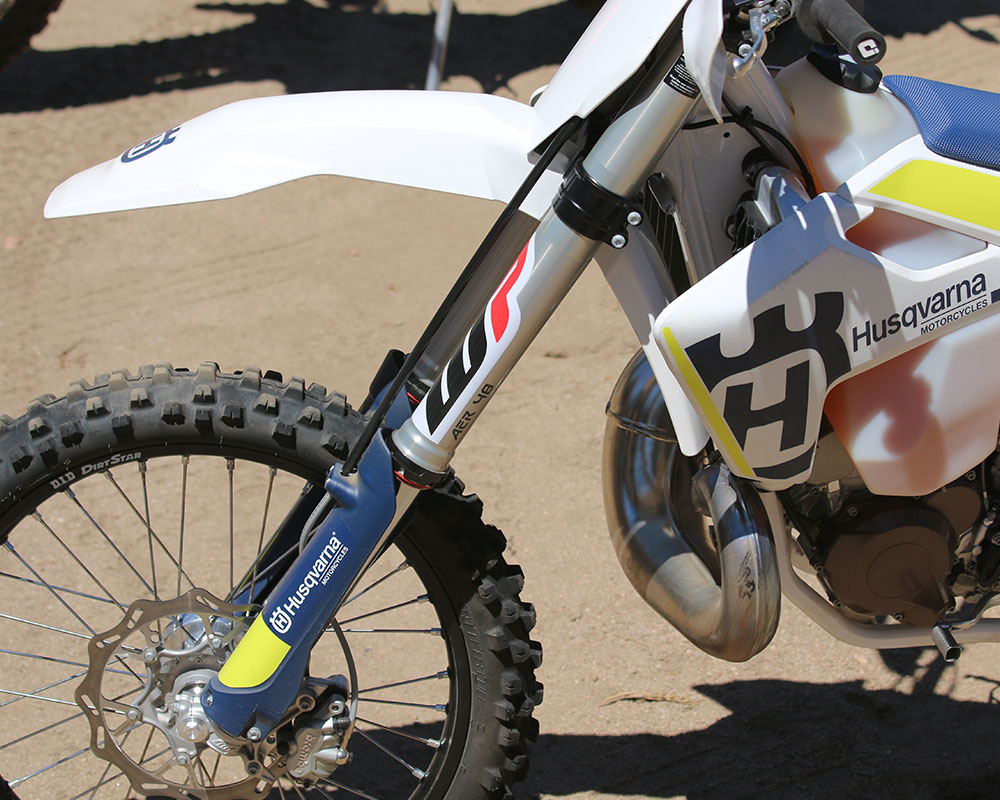
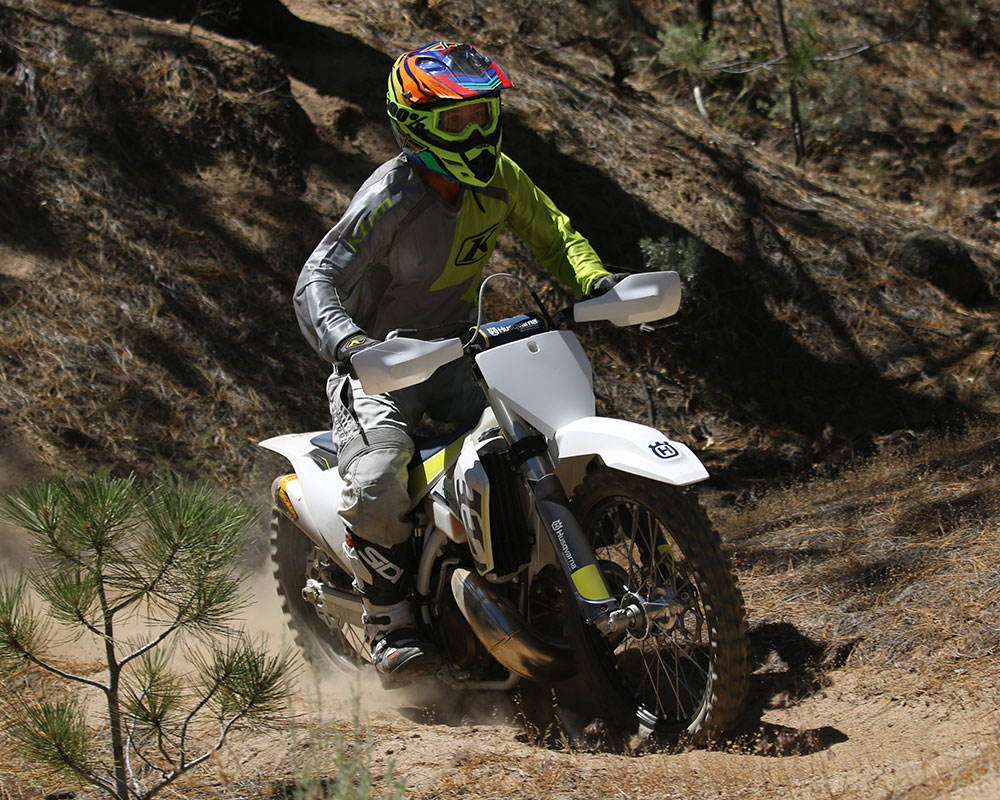
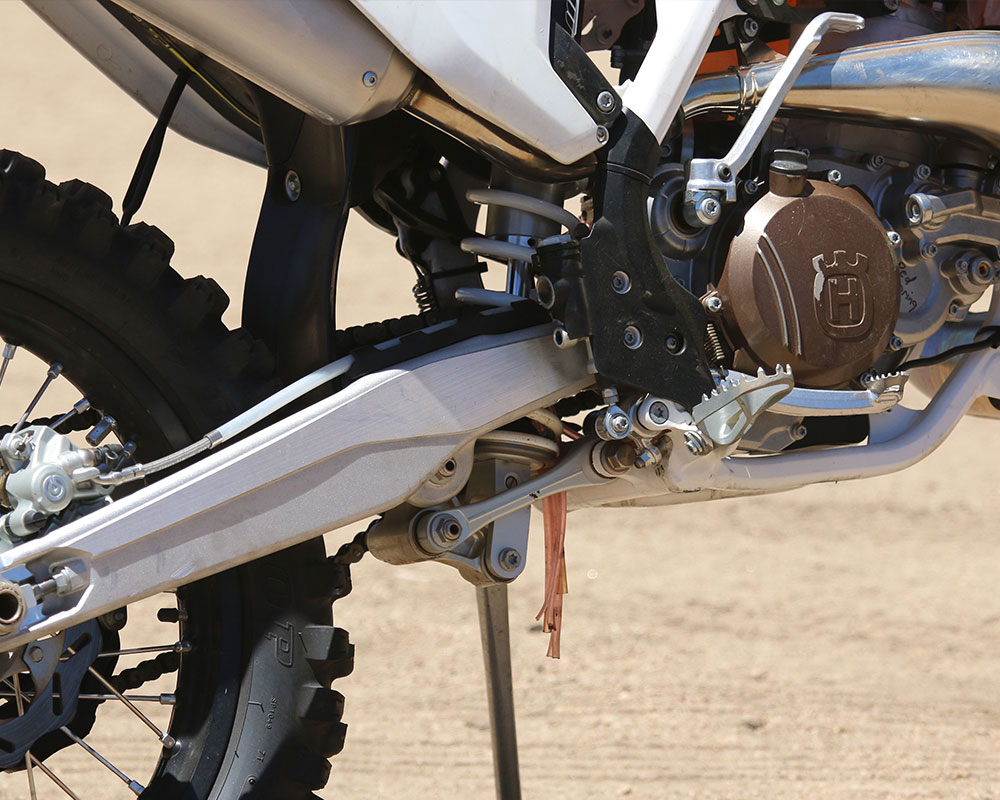
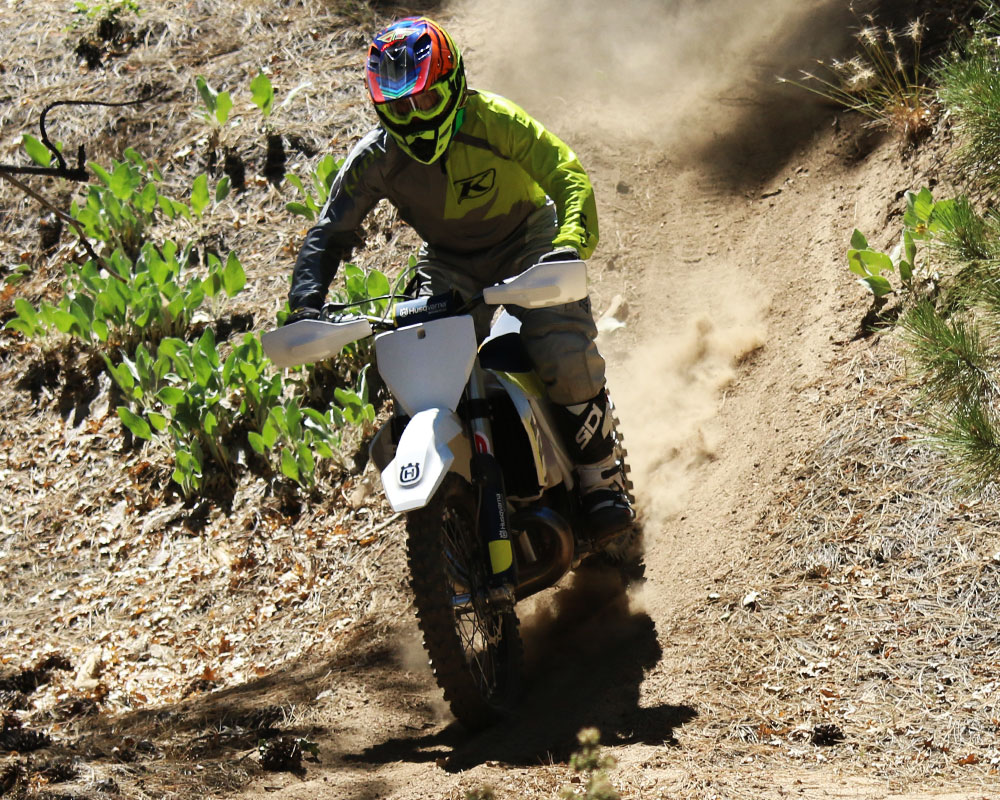
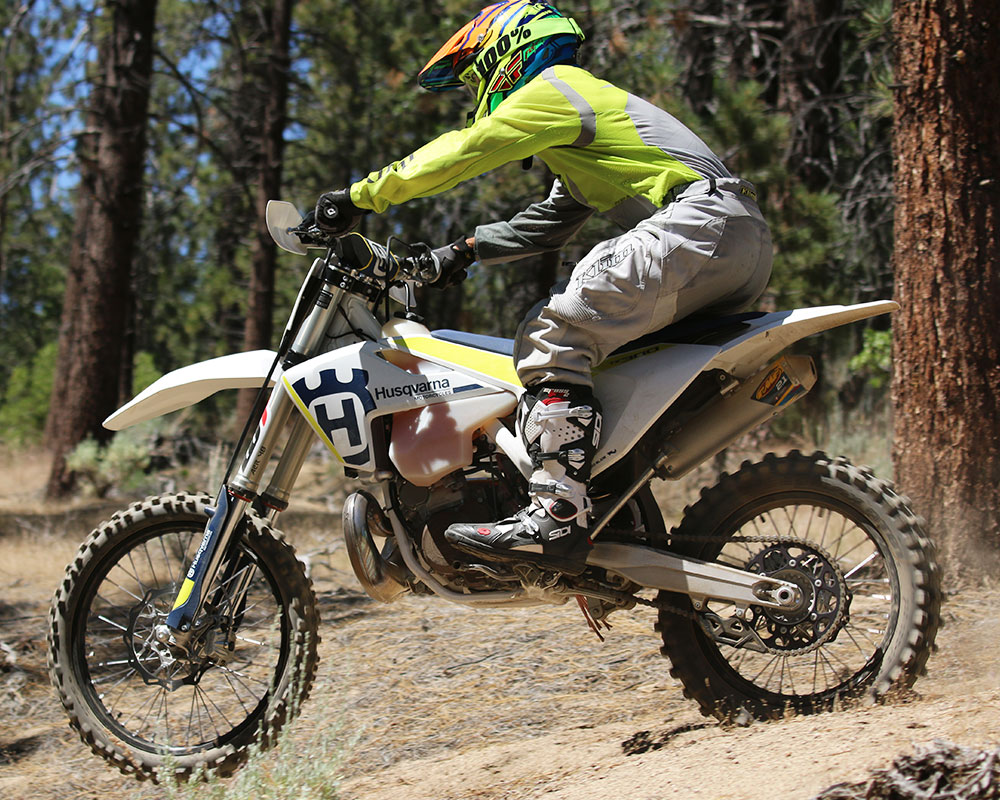
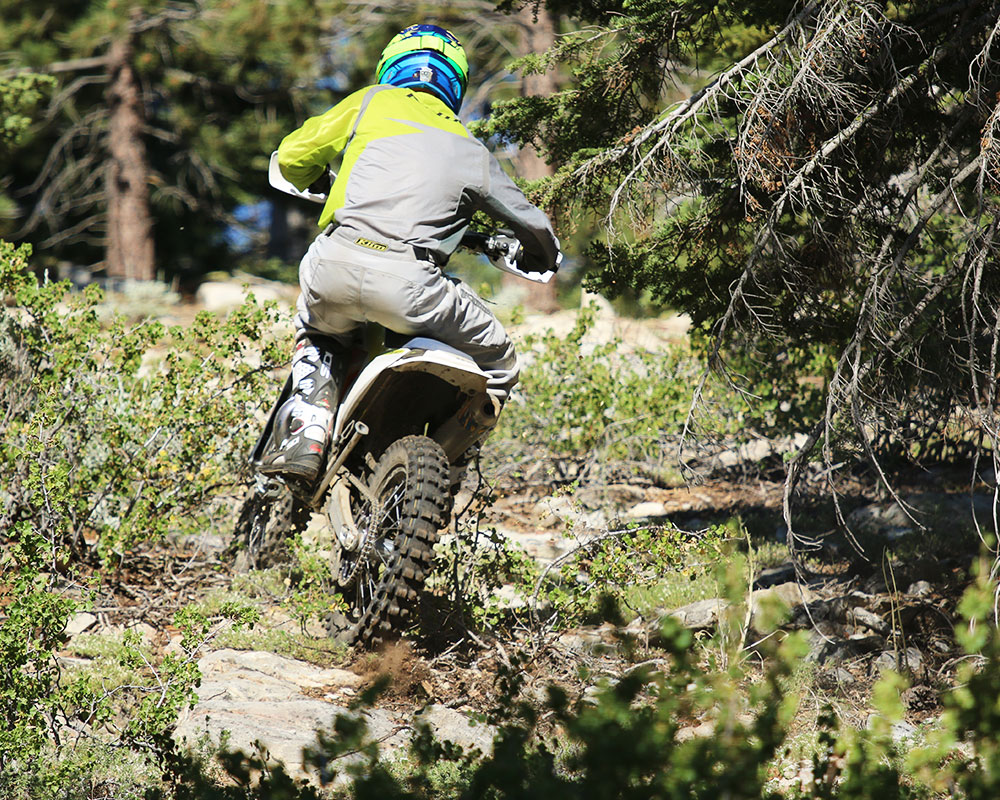

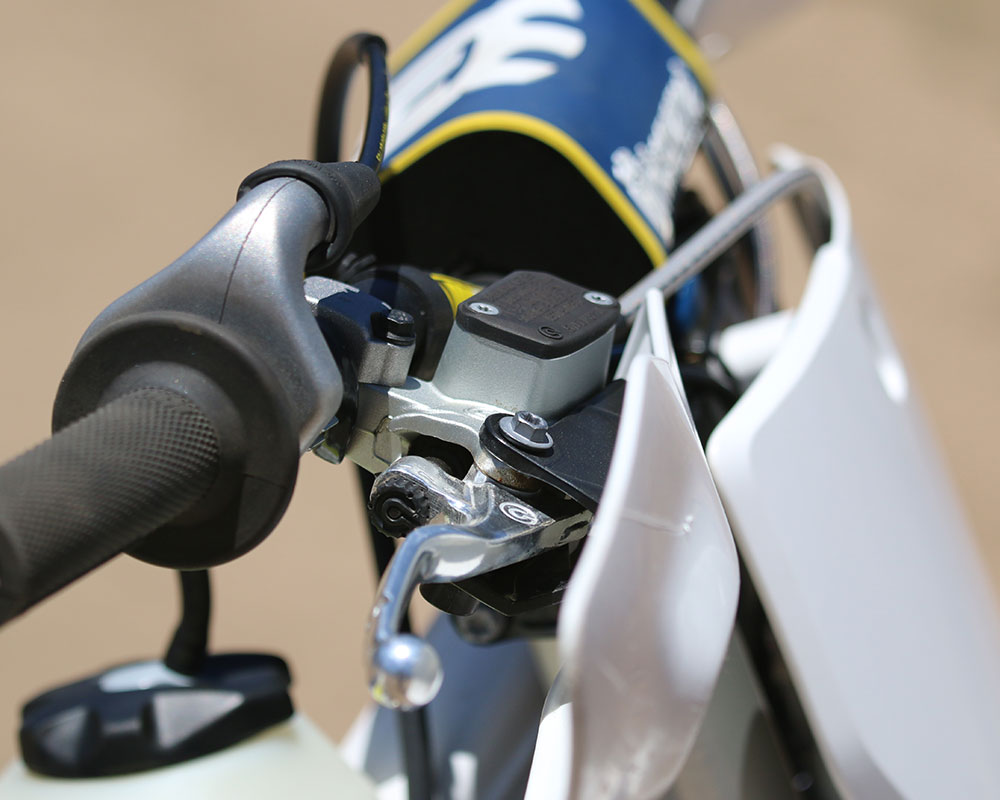
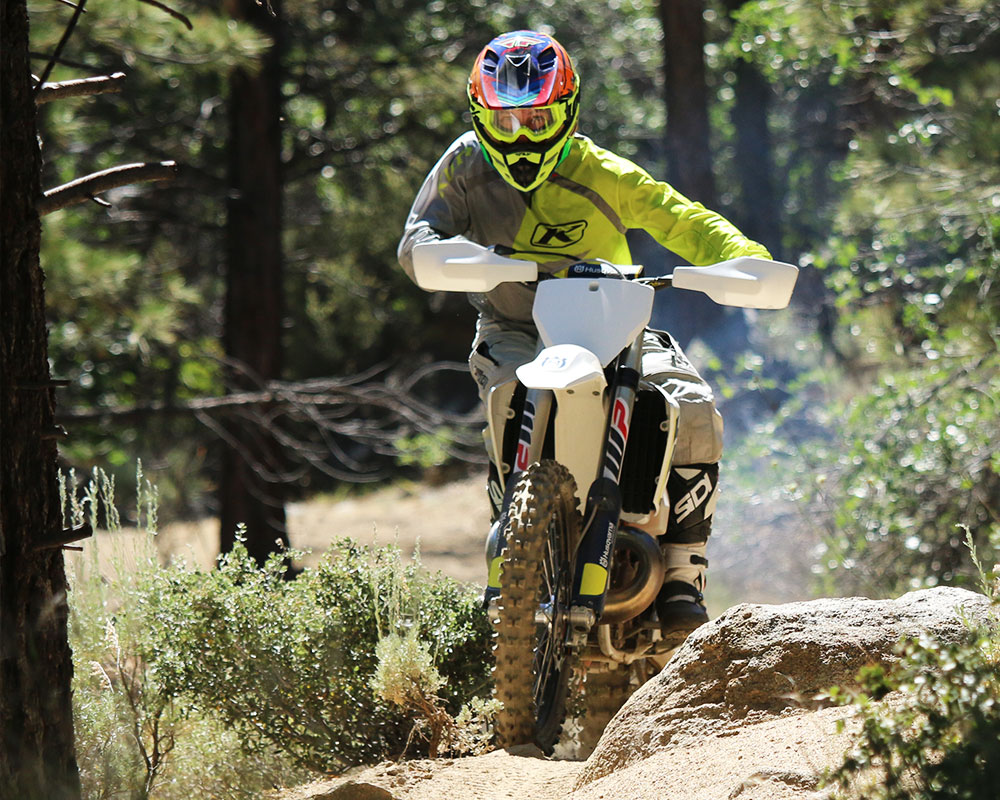

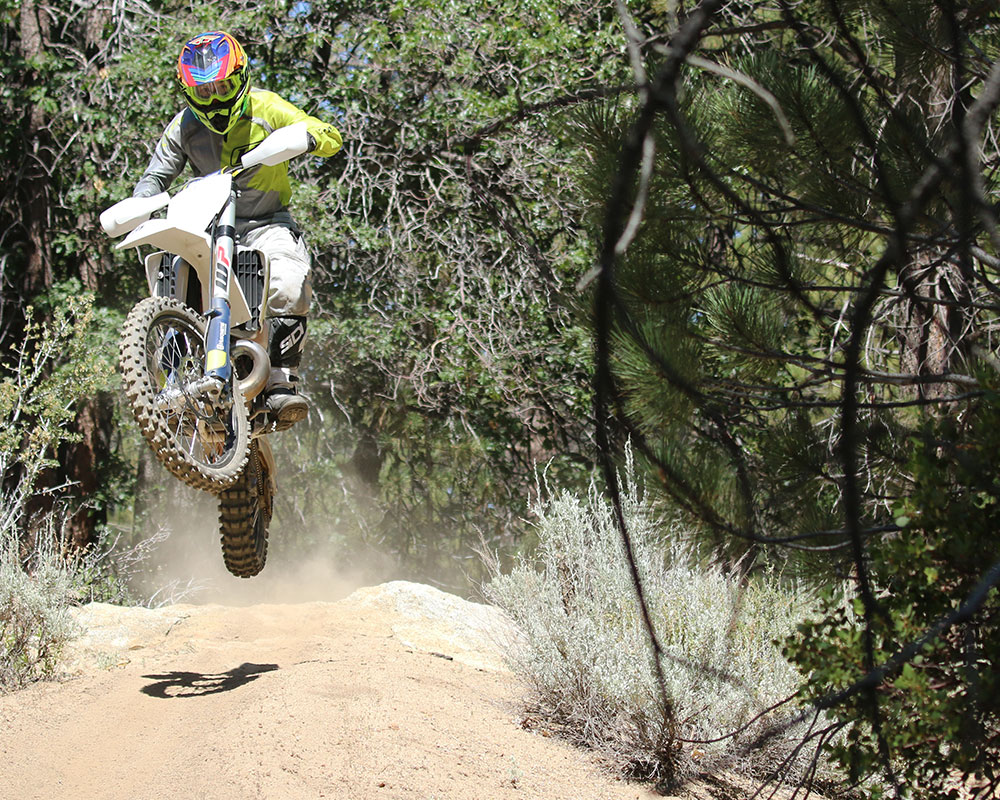


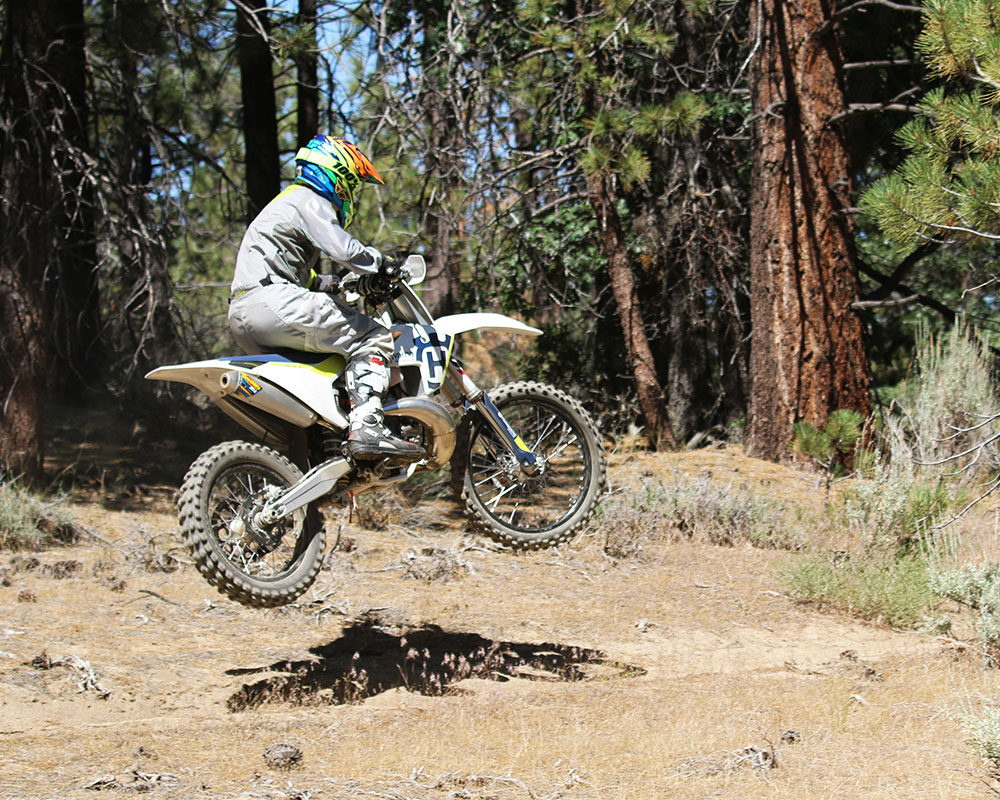
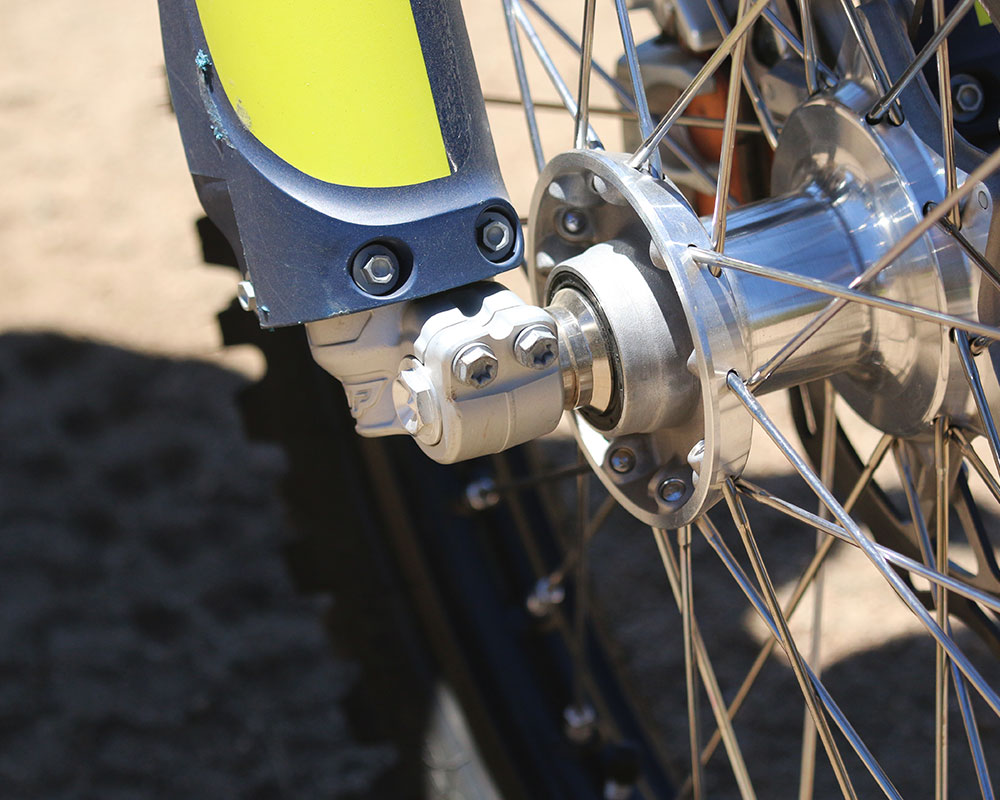
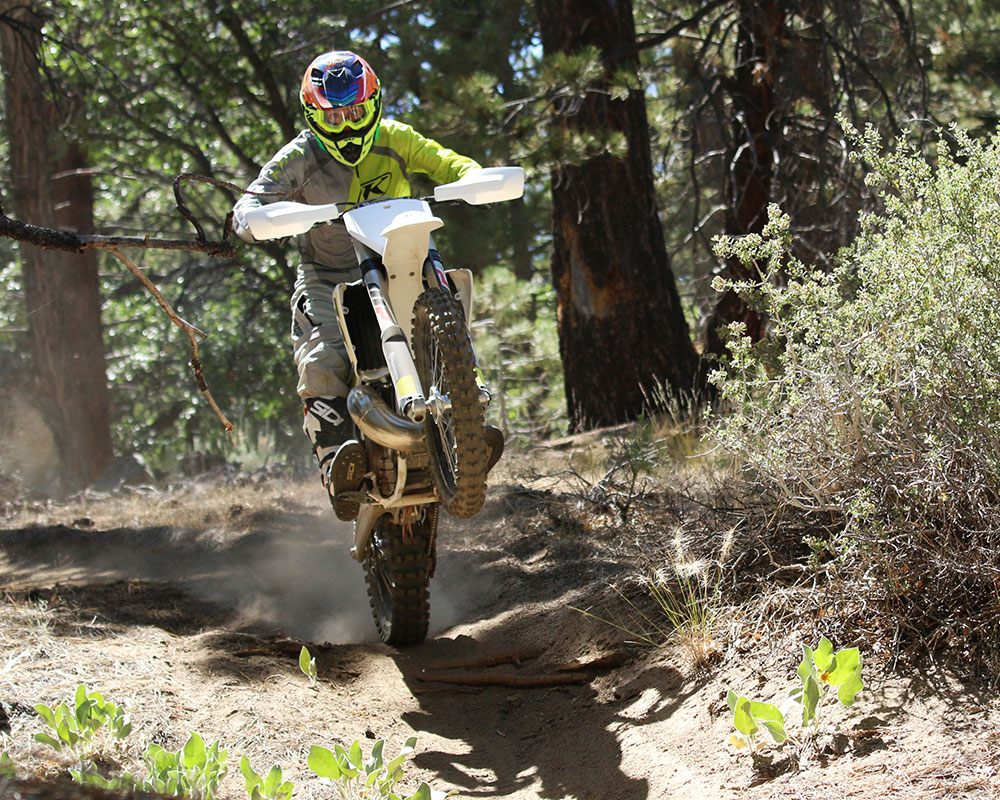
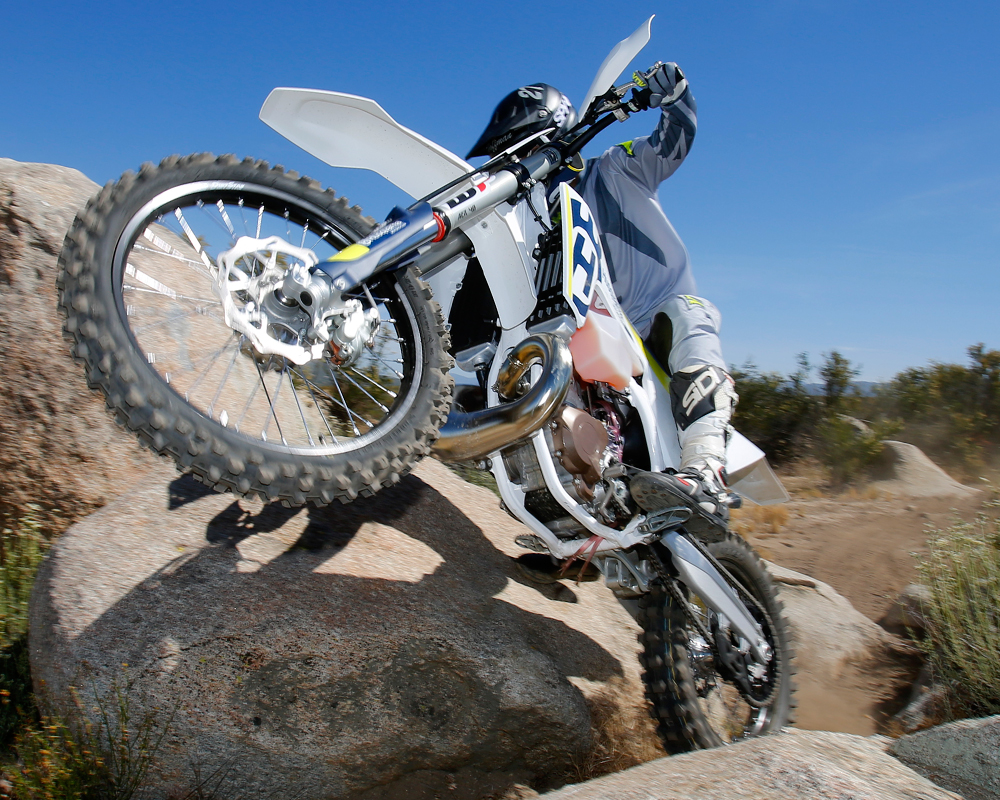
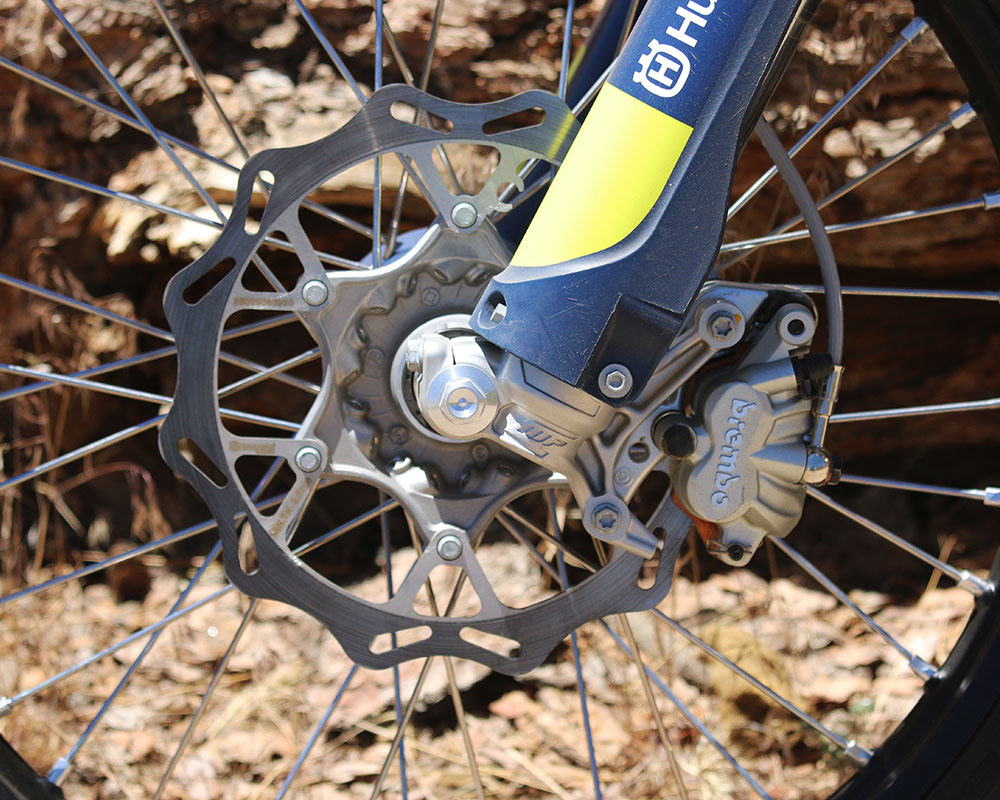

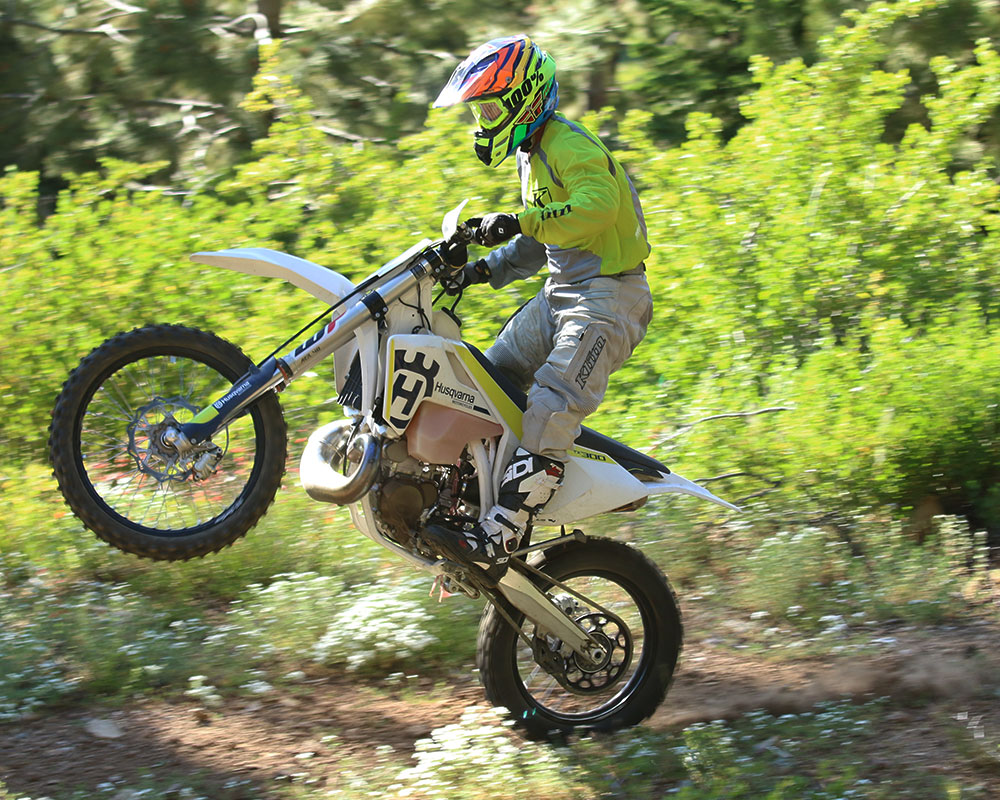
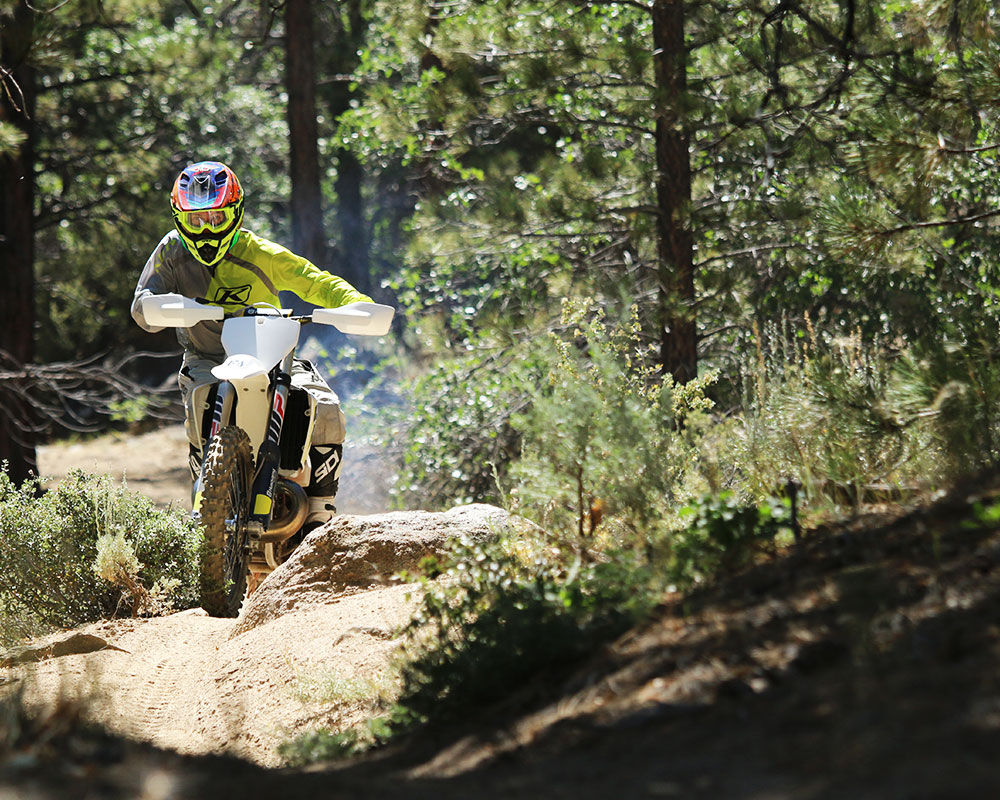
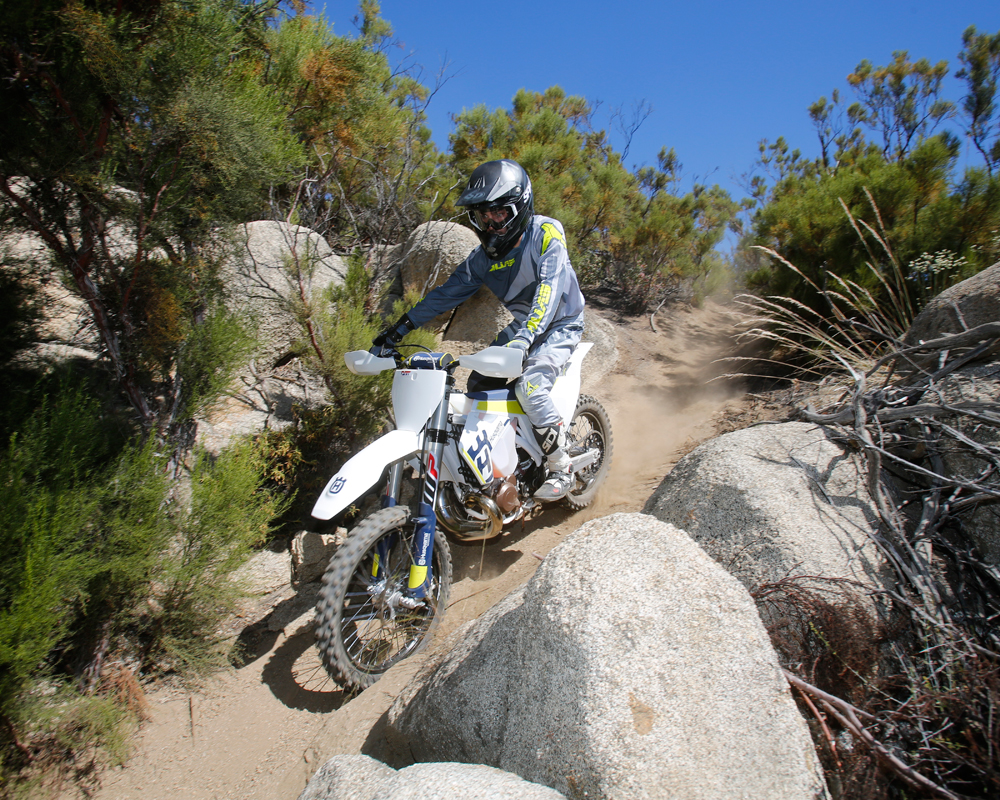
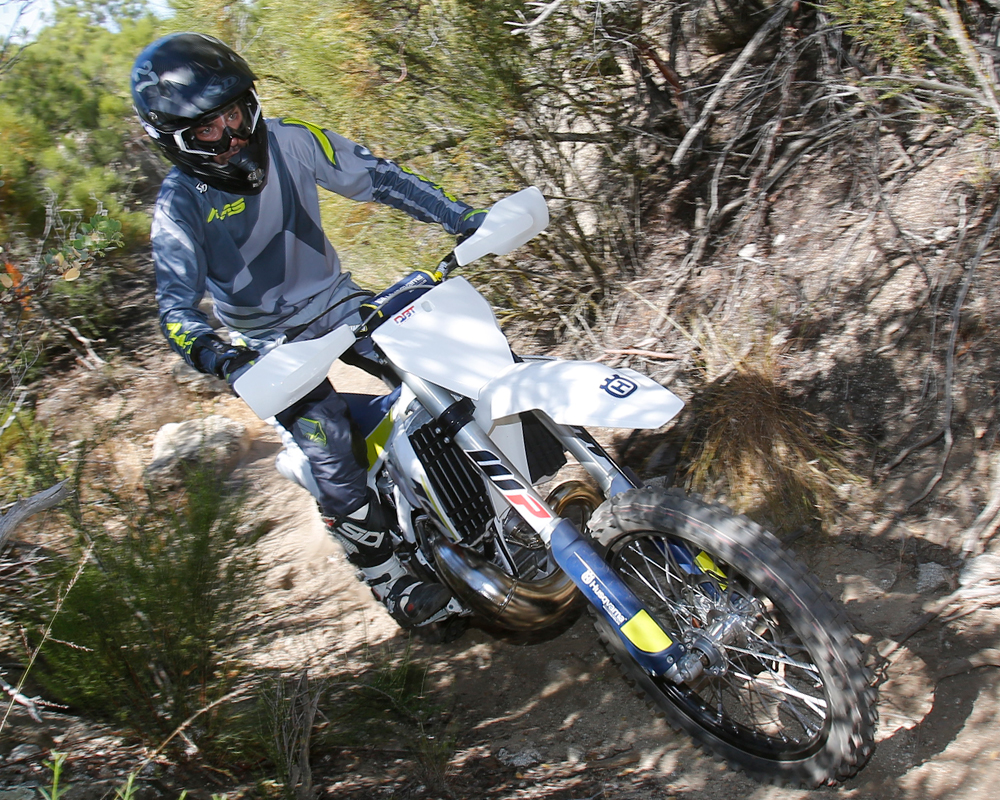
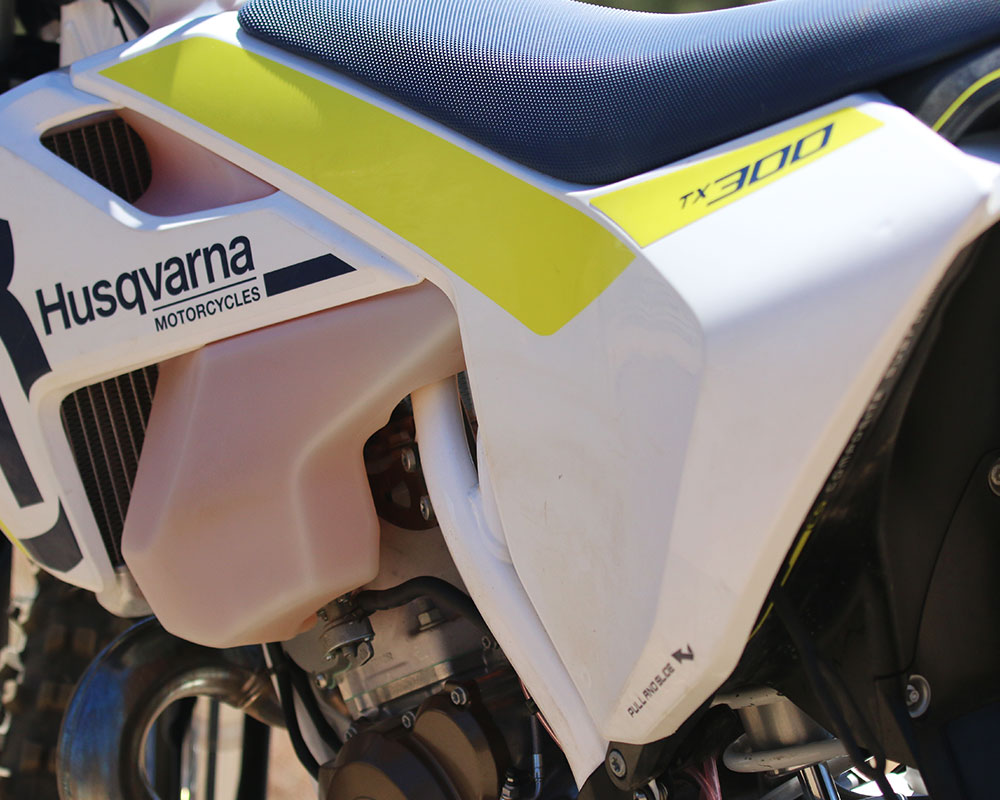
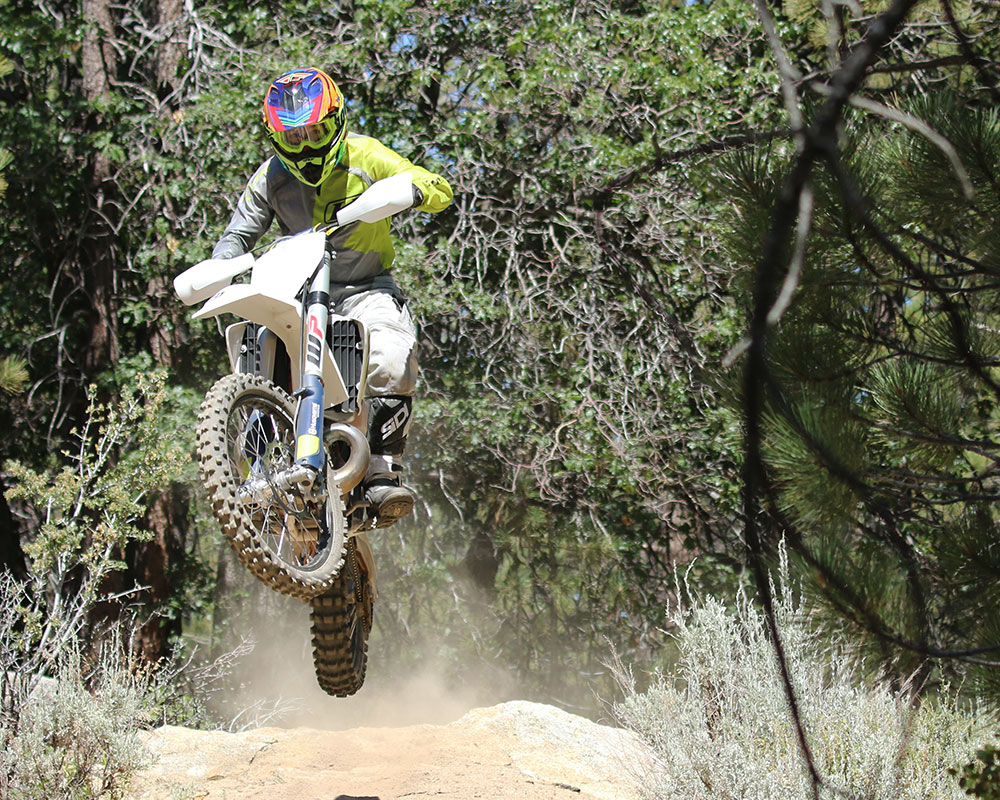


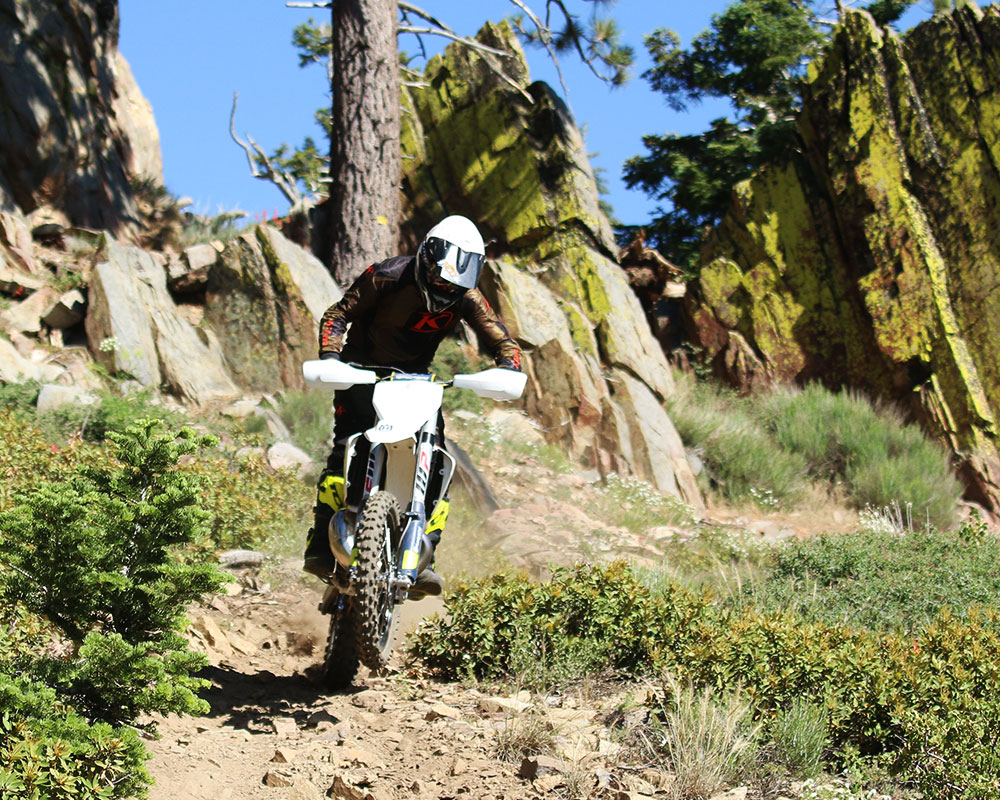
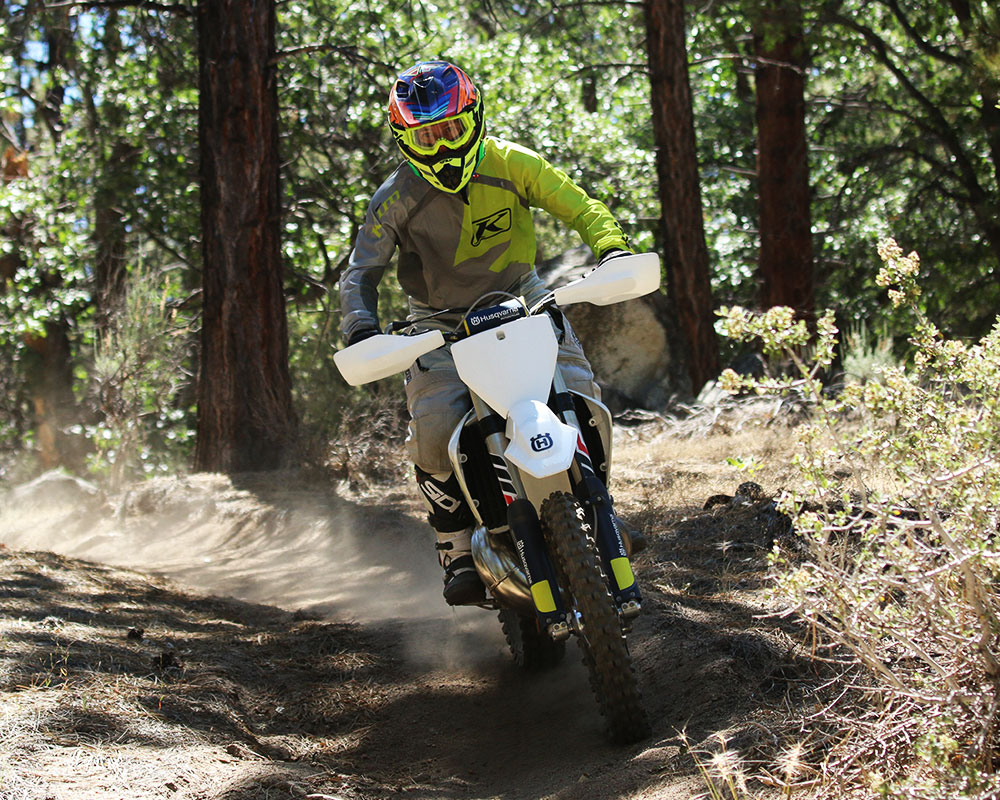
19 Responses to “2017 Husqvarna TX300”
Jaminson Moses
How do the air forks compare to last years KTM XC-W open cartridge forks?
Is there more stiction?
Are they as plush and follow the ground as well on rocky, Extreme/hard enduro type terrain?
Jimmy Lewis
The AERs do not move as totally free as the open cartridge but it was never enough for any riders to complain. But the open cartridge forks do not have near the bottoming control of the AER 48s. Frankly for me it would be a tie as to which one was better. I think the AER fork has much larger range of usability and the tuning through the clickers can solve most rider’s concerns. Just a few clicks make a pretty big change. And a simple change to a different tire than the Dunlop with a softer casing would really help more than any fork issue on this bike for the extreme enduro stuff.
Jimmy Lewis
The TX has the AER fork.
Jimmy Lewis
The air can make the spring rate stiffer but the calving is still pretty soft compared to a MX fork. Remember air is just spring rate.
Paul Threlkeld
You said you tested with a fmf power core silencer, yet fmf is saying they don’t have anything yet that fits. I’m curious what you used and did you have to modify it someway to work?
Jimmy Lewis
FMF has been slow to get stuff into production. They used our bike for fitting.
Jimmy Lewis
A picky rider would notice it between the two bikes but I’d say 75% of riders would never mention it. It would take back-to-back riding for most to notice the vibration. There are many more dramatic differences between the bikes for sure.
Mike
Thank you for the great article and site! This answered a lot of questions I had but I’m still struggling to make a decision. Think I’ve narrowed my next bike down to a tx300, te300 or the yz450fx. I love 450 power but on the trails here in Idaho I think I’m finally ready to tap out. I’m bigger- 6’+ 220# Vet A level in the woods and on the MX track… Unfortunately I can only have one bike in the garage otherwise I’d have a few. Would love to ride the tour of Idaho someday soon so that makes me lean more towards the 4 stroke… What would you choose if you could only have one? Thanks for any advice.
Jimmy Lewis
That is a trick question. I’m sure the floor will respond….
Mike
LOL! True, thanks for the response anyways. 🙂
Paul
From my experience. None of those would make a touring bike in any way/shape/form. Unicorn you are looking for.
Gary Rios
Would a Lectron carb be helpful on this one
Jimmy Lewis
We do not have enough experience with the Lectron to answer that.
Rick Bullotta
I highly recommend giving one a try and reporting back results. I think you’ll be blown away.
Jimmy Lewis
We have ridden a KTM 300 XC with one for a short time. It lost a lot of response (hit) and did have some issues with it in whoops. It was someone’s personal bike so there is no telling how it was set. From that impression and previous experience with Lectron those feeling were consistent with past impressions. We’d have to test one in a more controlled environment to really know. It is good that they are working for you but we are set on getting the Mukini to work better and will explain a lot more detail in our KTM 300 XC-W test.
Rick Bullotta
In short, yes it would, and it transforms the bike. Virtually all of my friends on ’17 Huskies and KTMs (including me, on a 300 XC-W) dumped the Mikuni and went with the Lectron. Never looked back.
Philip J Hestbeck
Just wondering if you guys ever found decent jetting?
Jimmy Lewis
We have a KTM 300 XCW now for a little longer and we are working on it. We have heard for most instances making sure you are running a full synthetic two-stroke oil at 60:1 makes a huge difference. Also using the supplied leaner needle which is in theory a half clip leaner than the one that comes in the bike will help.
But to get to the bottom it will take us more time.
Philip J Hestbeck
Thank you for the response. I ended up with JD Jetting.